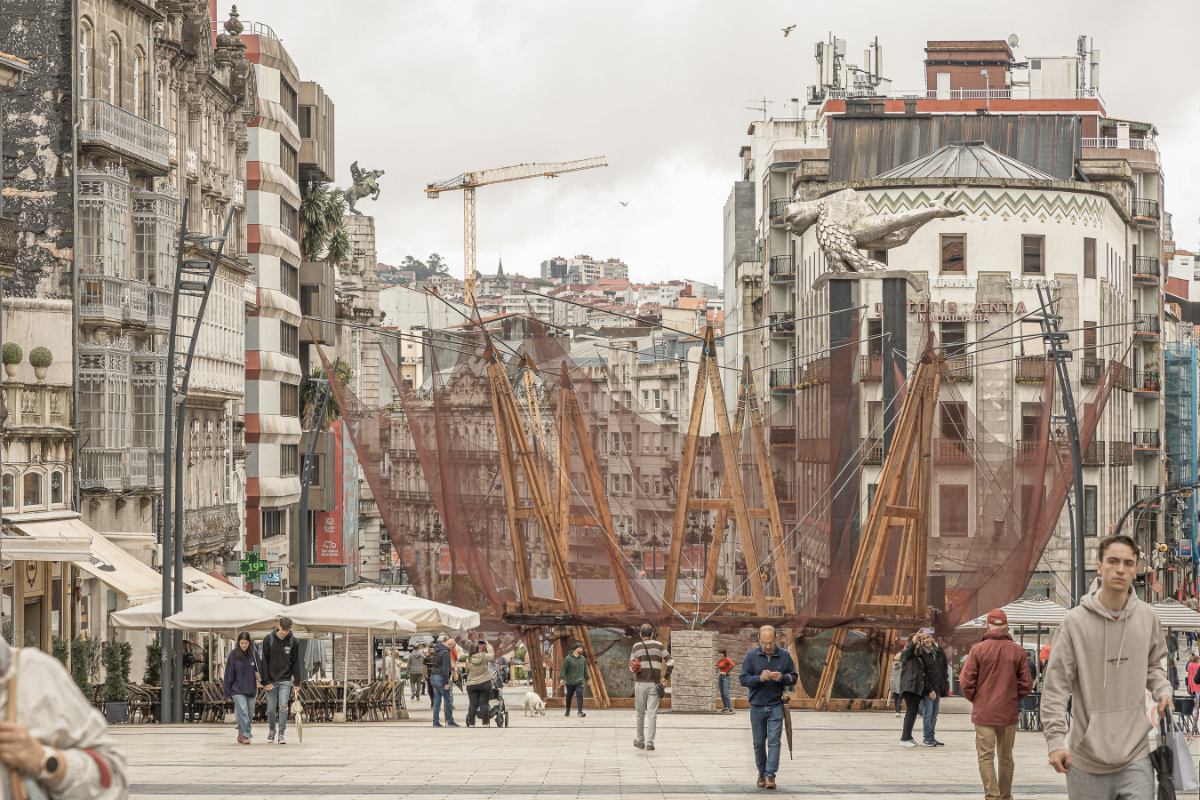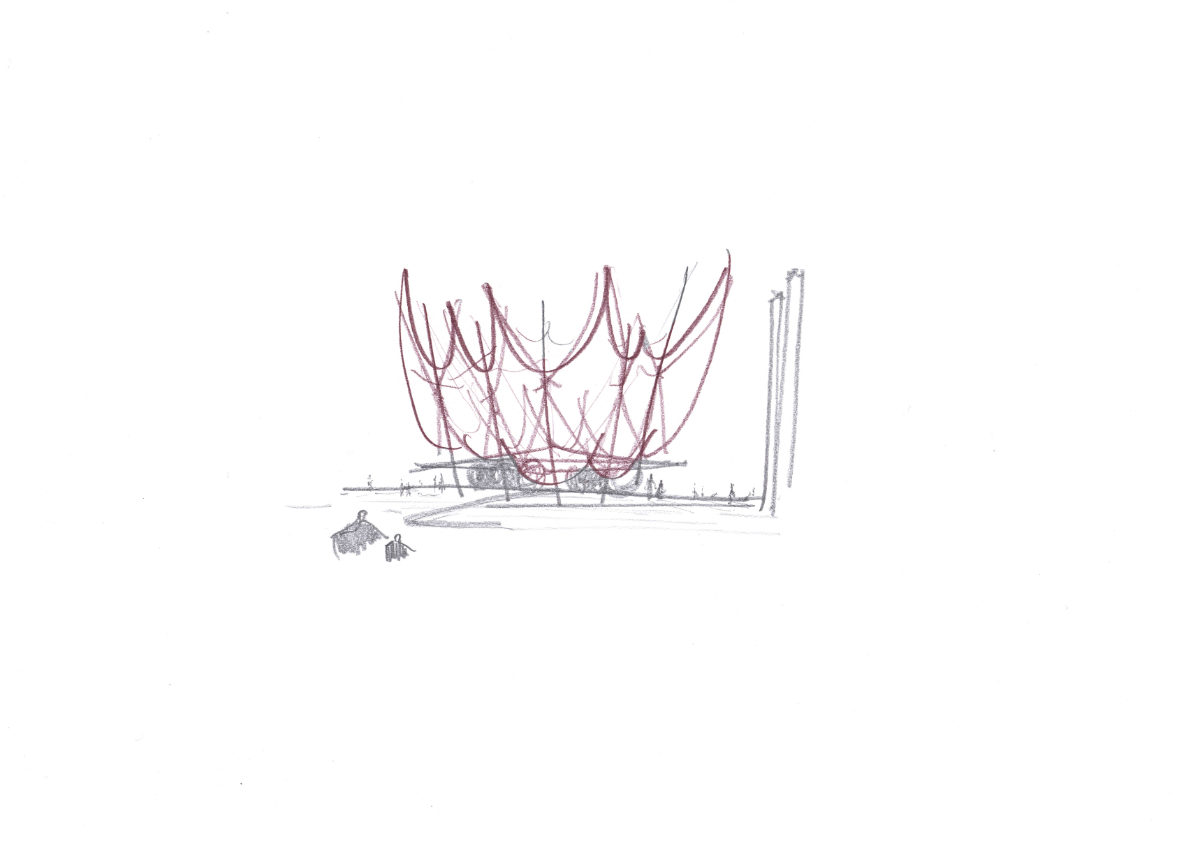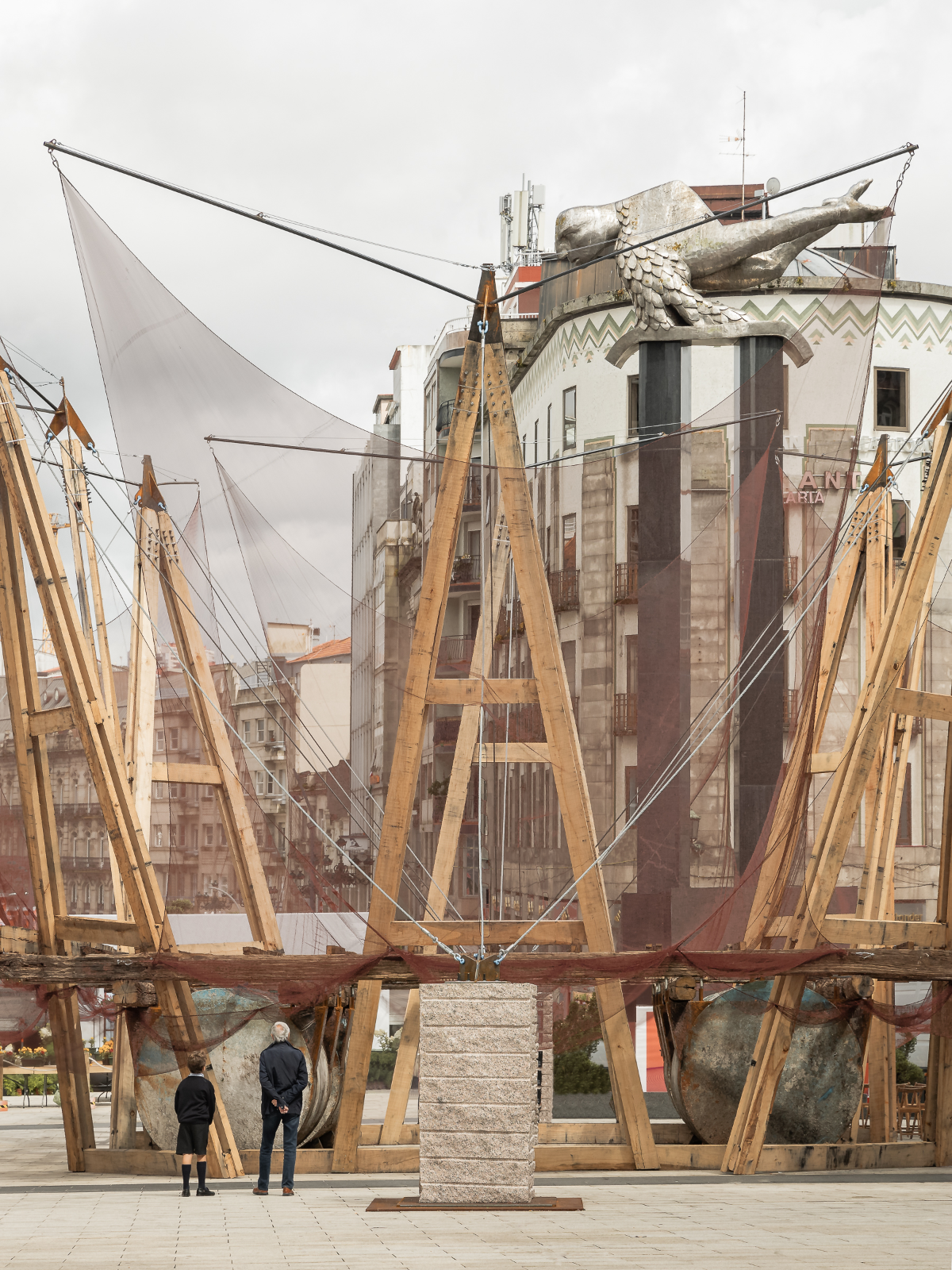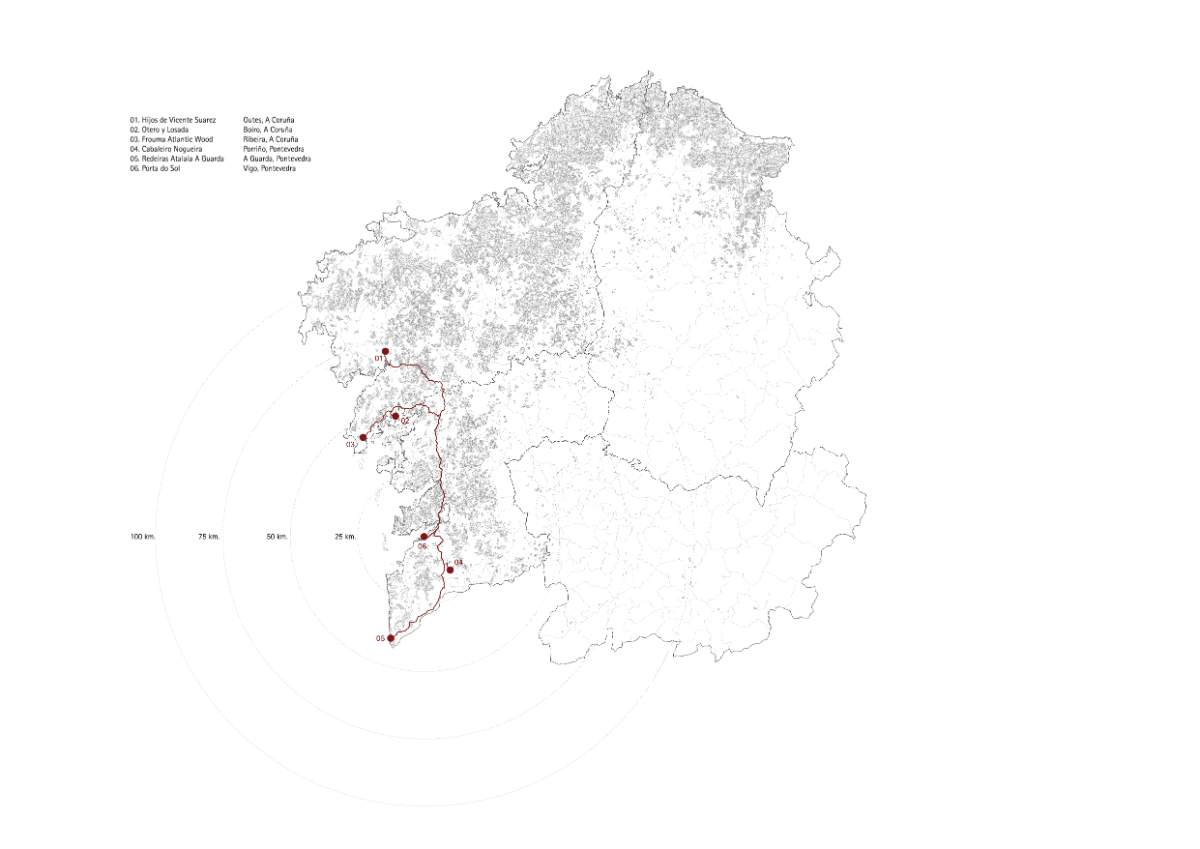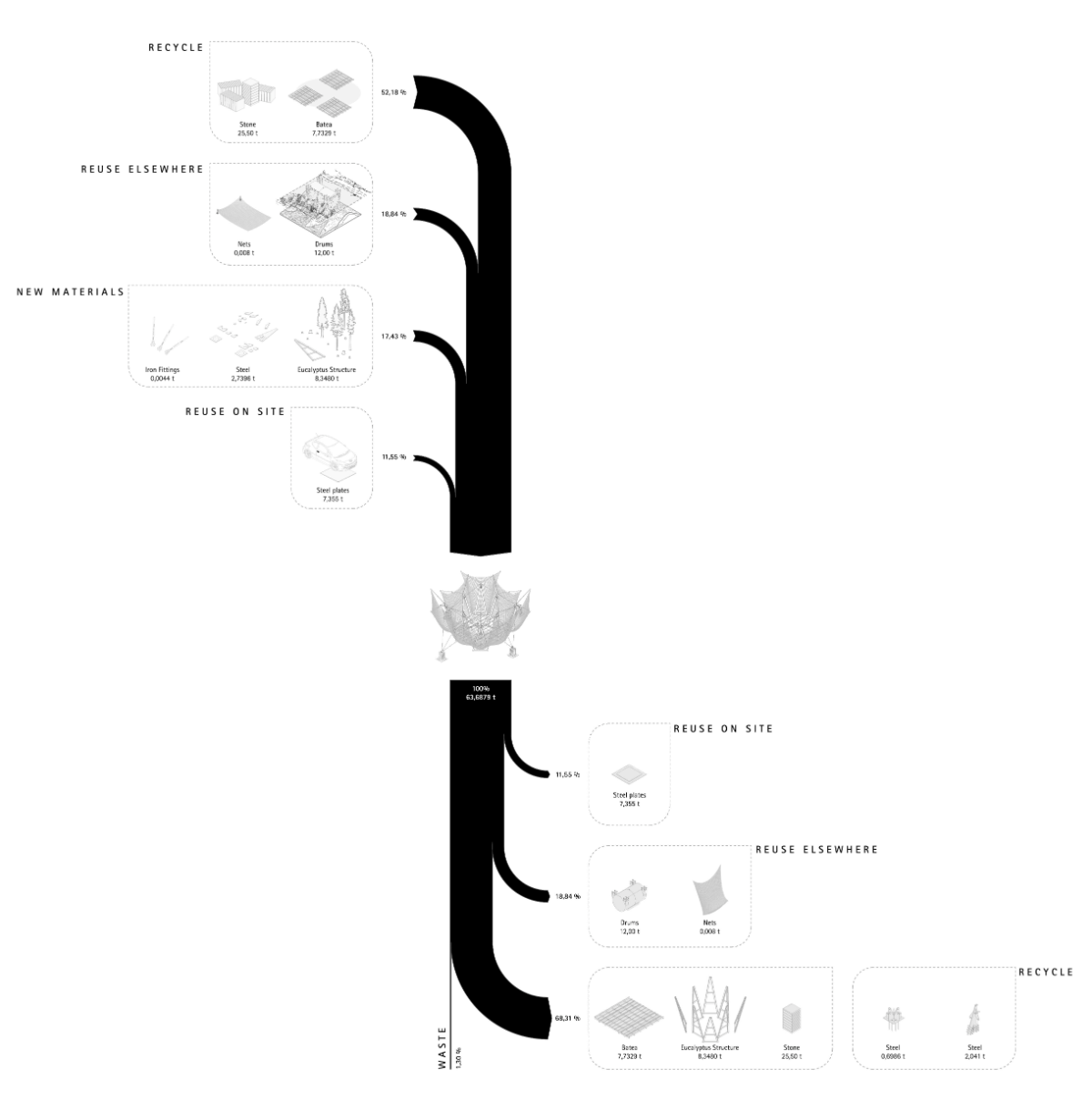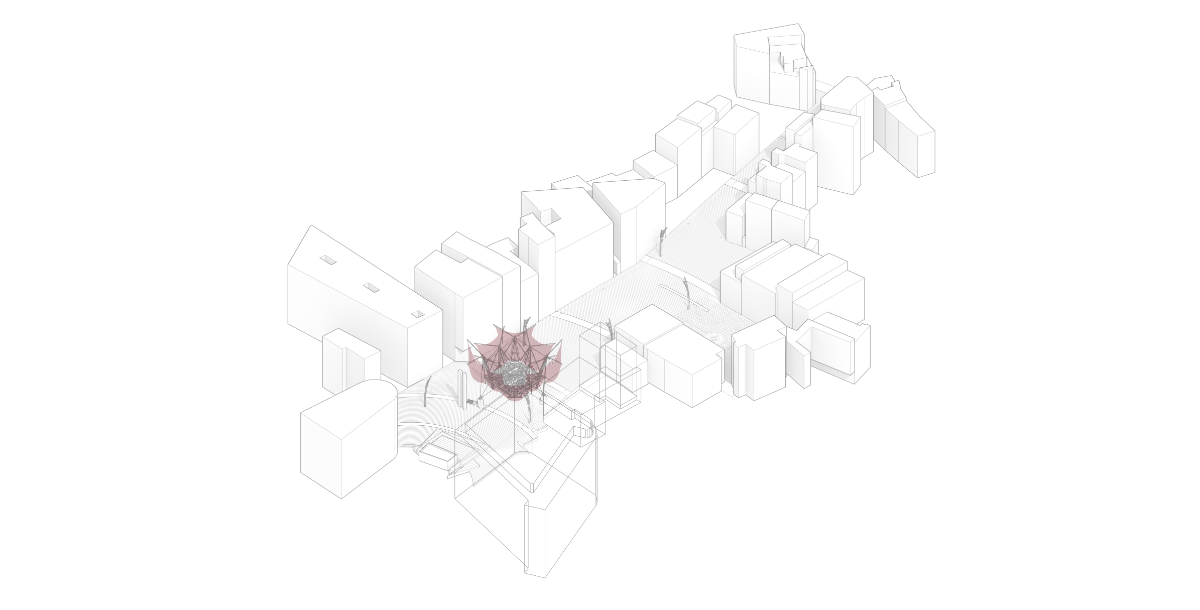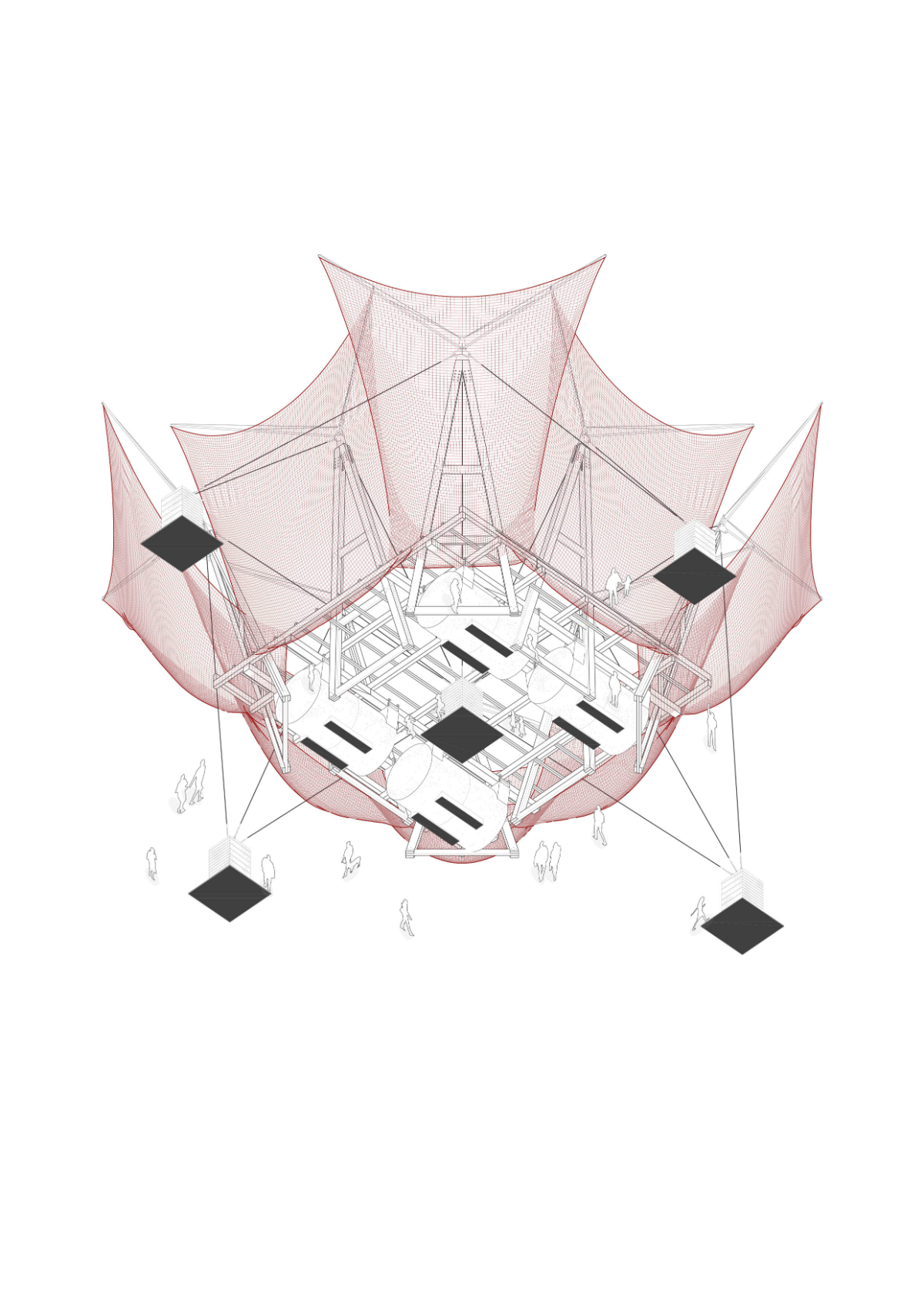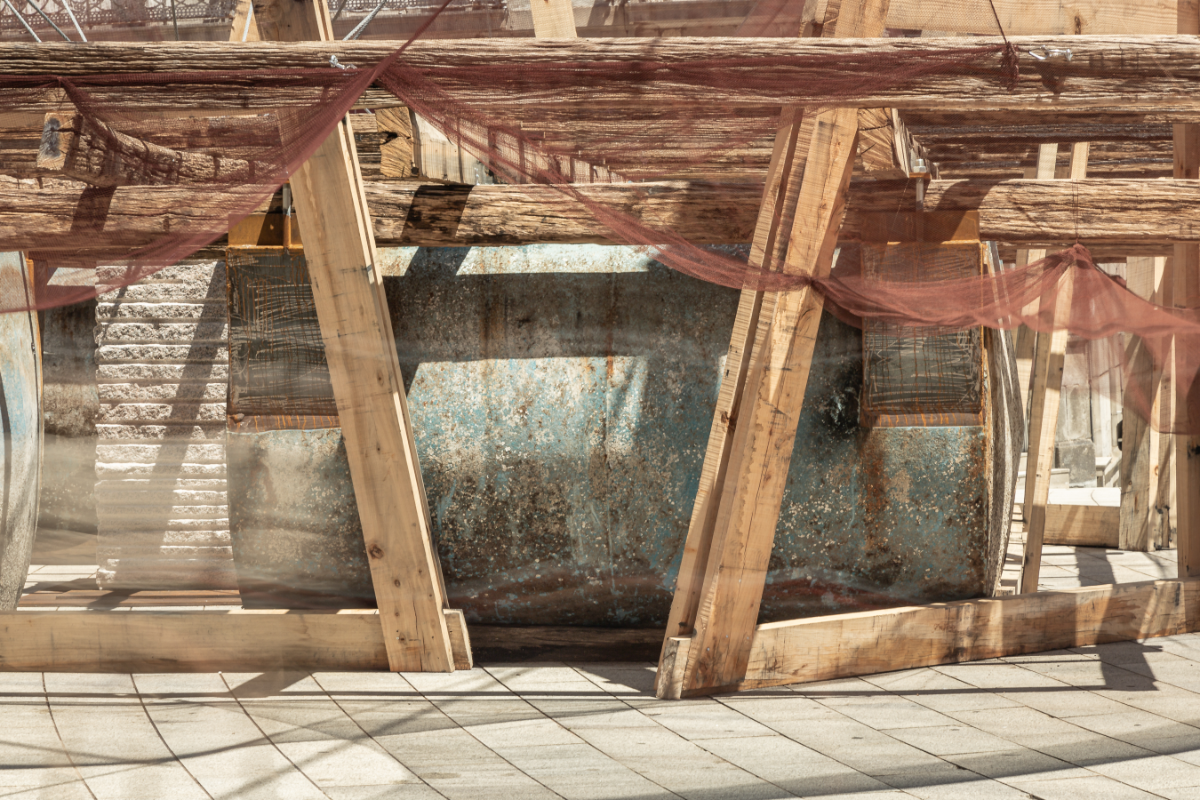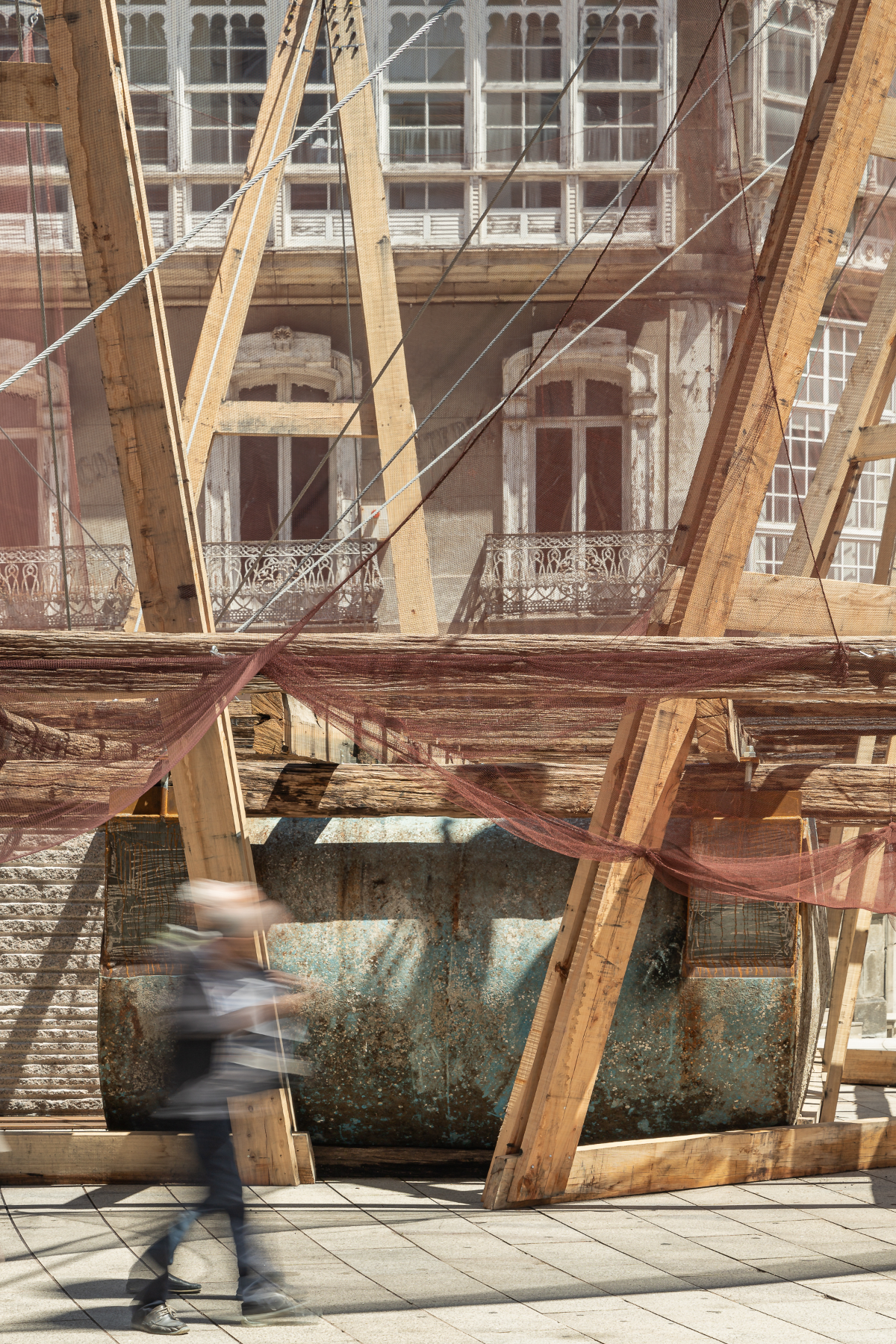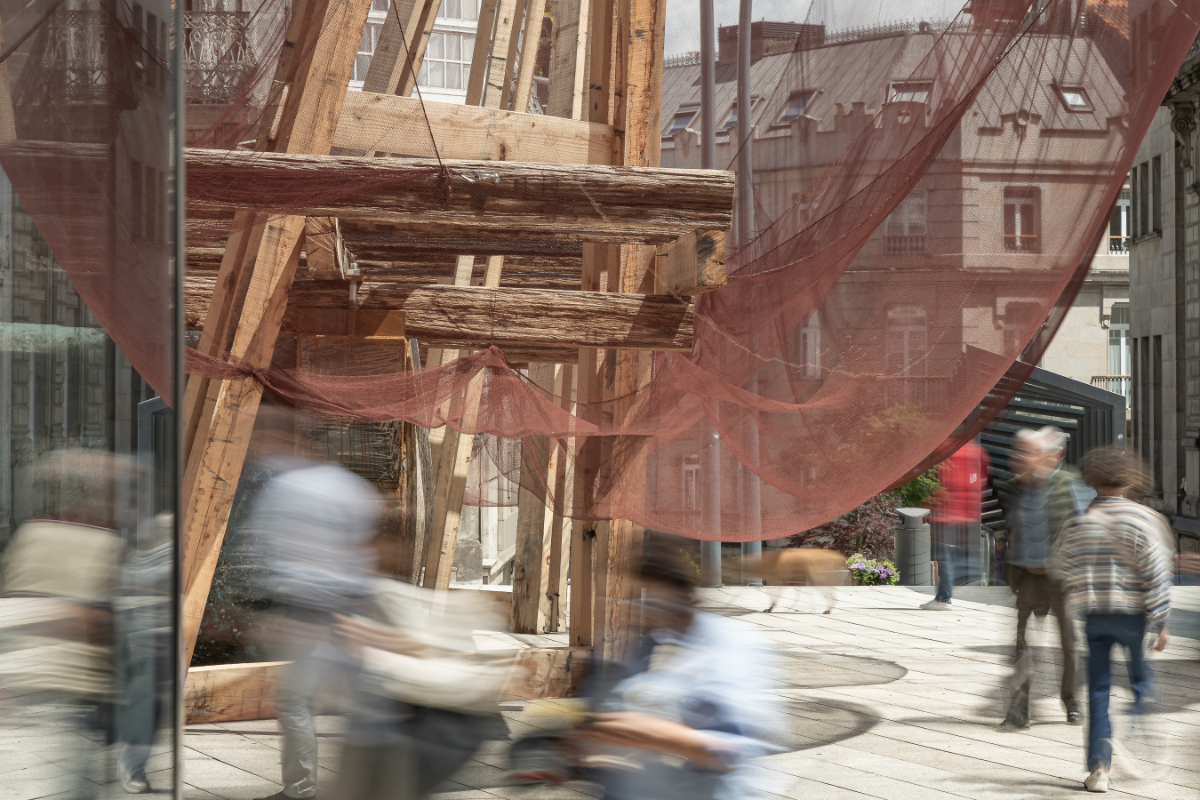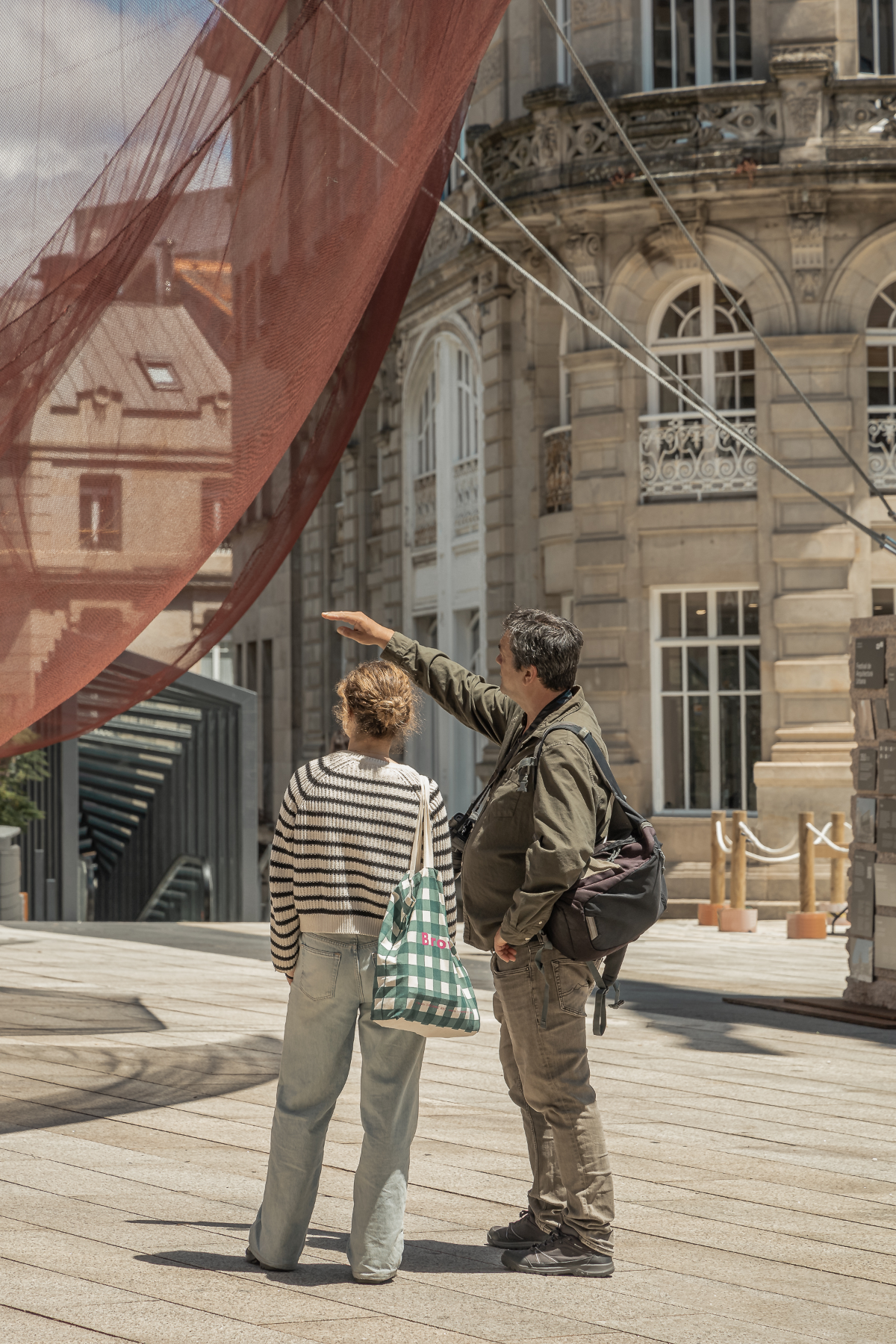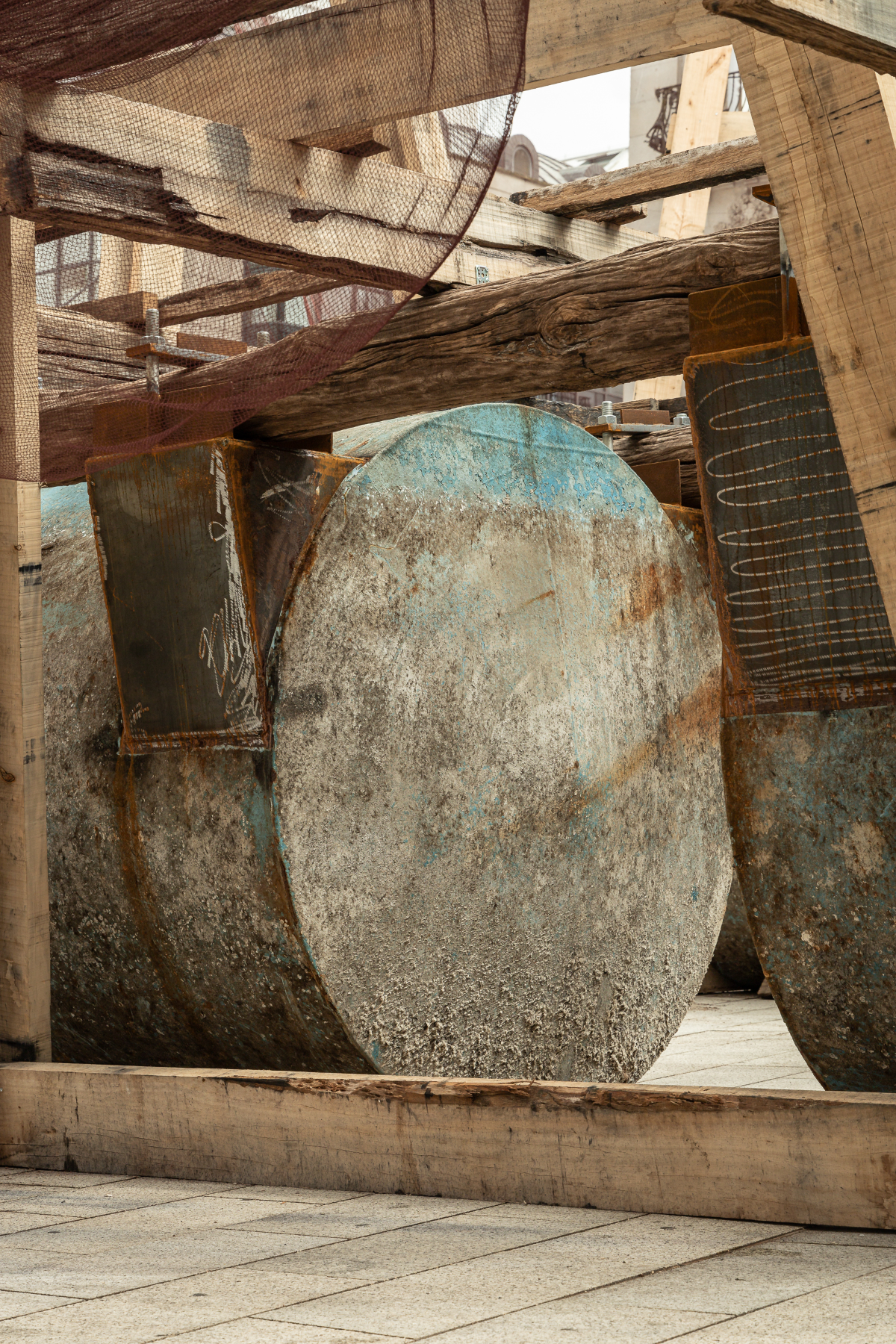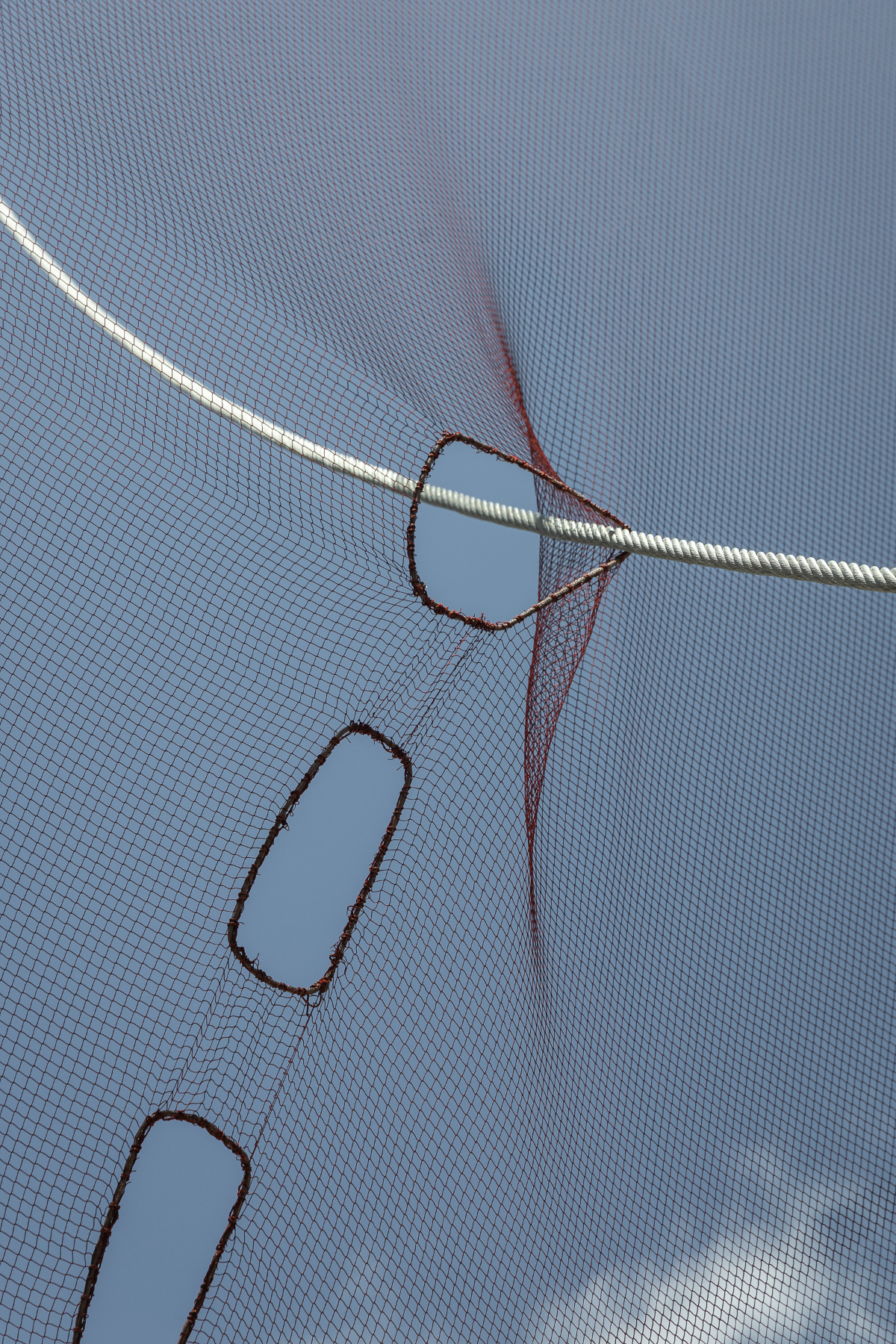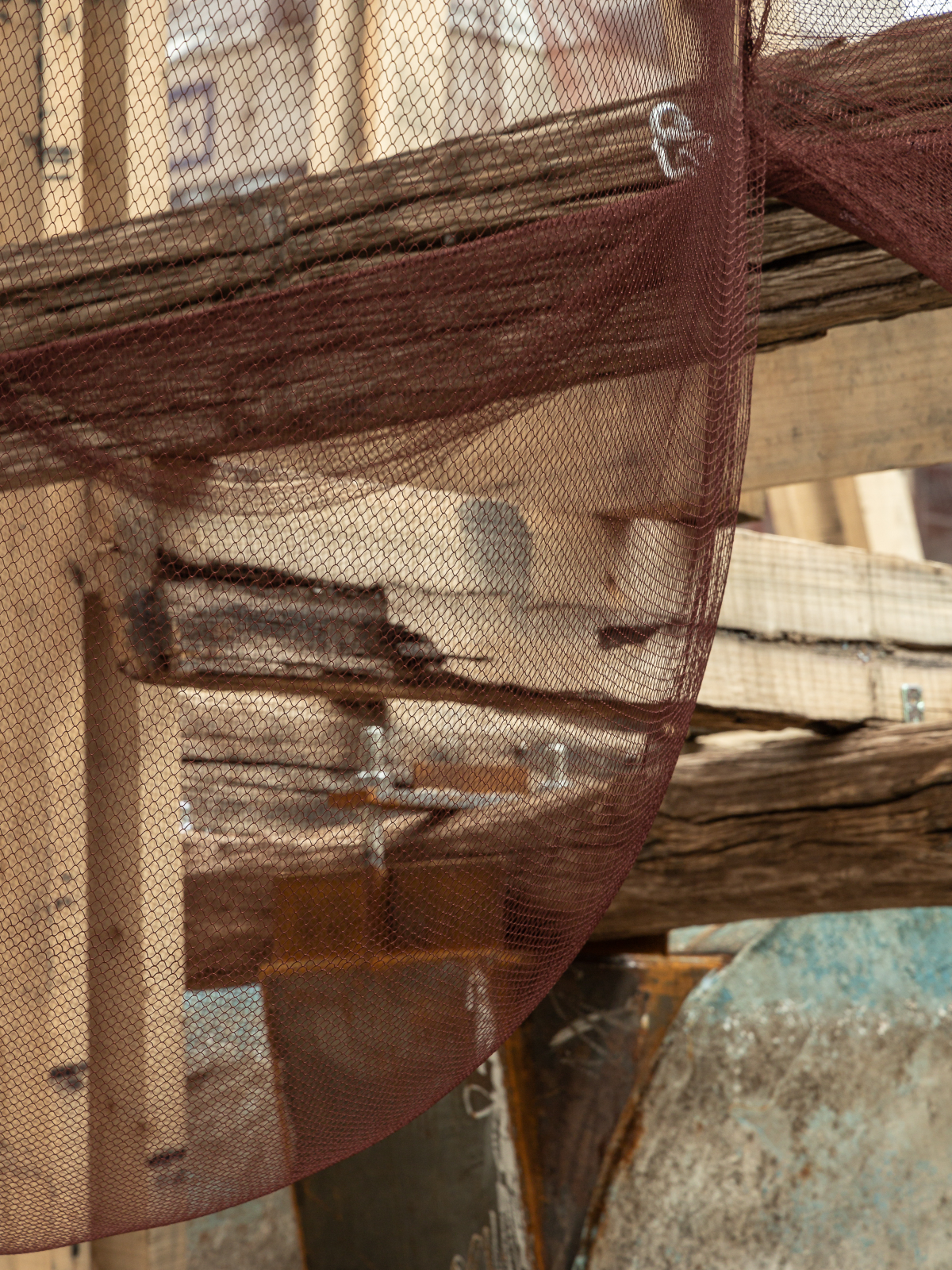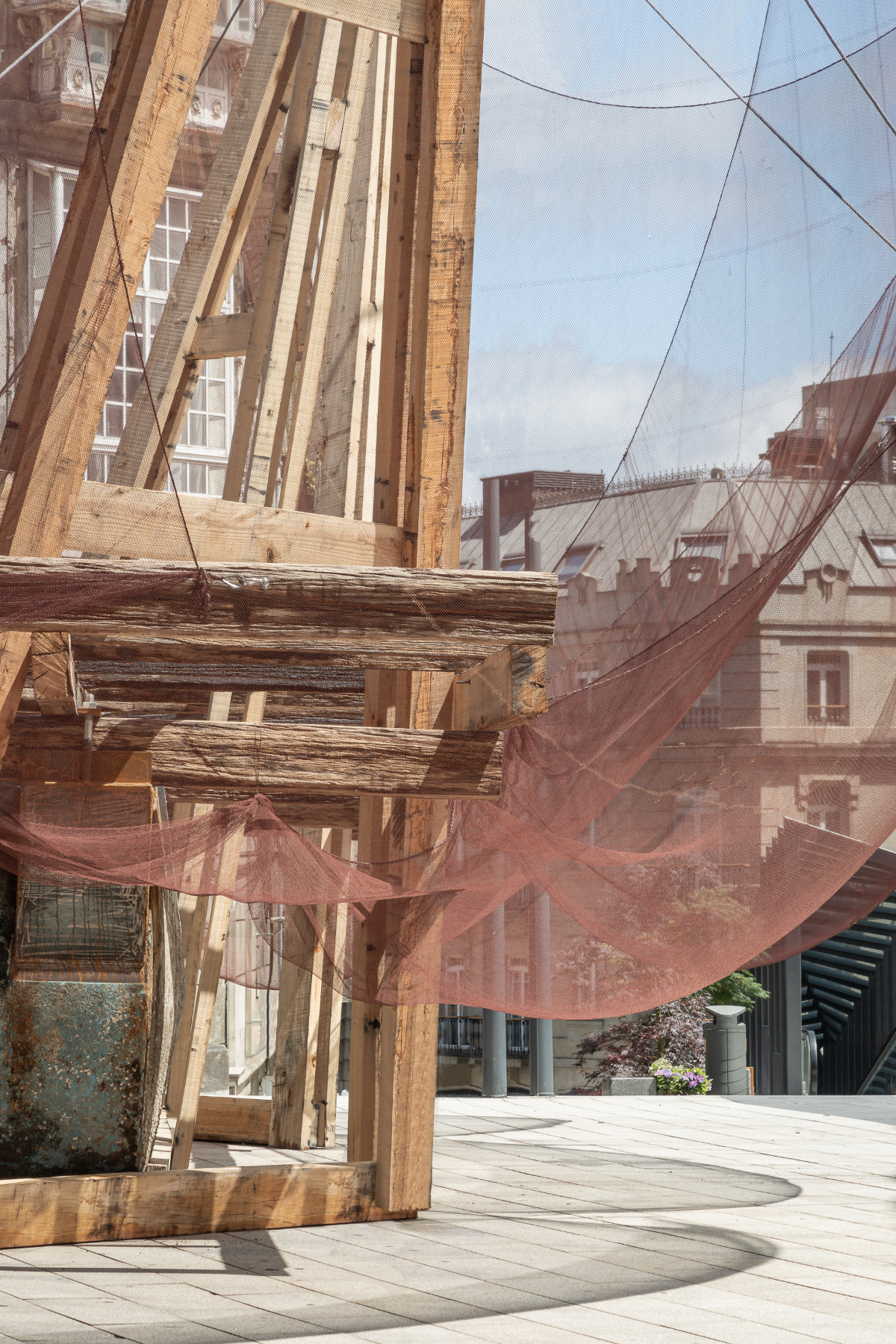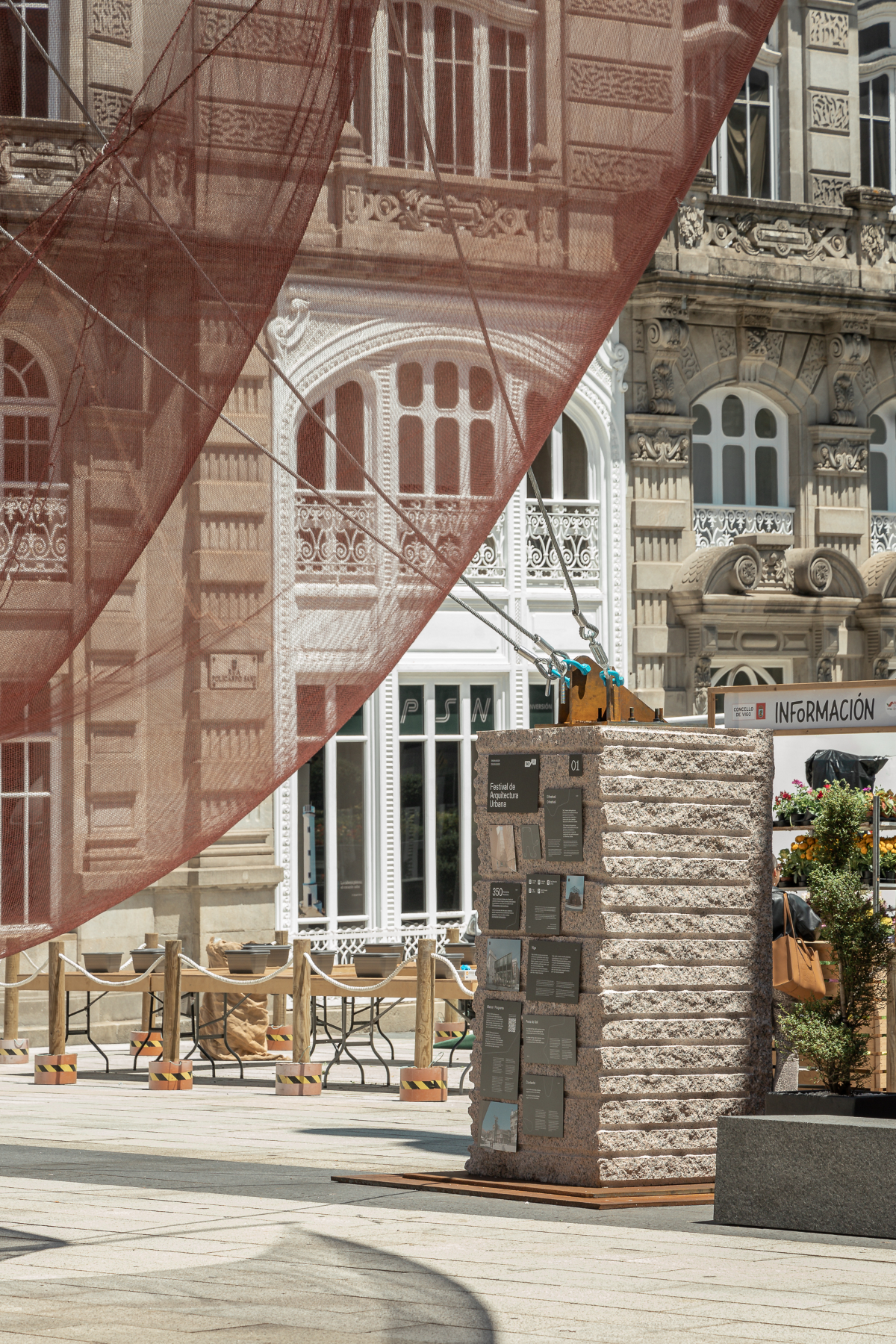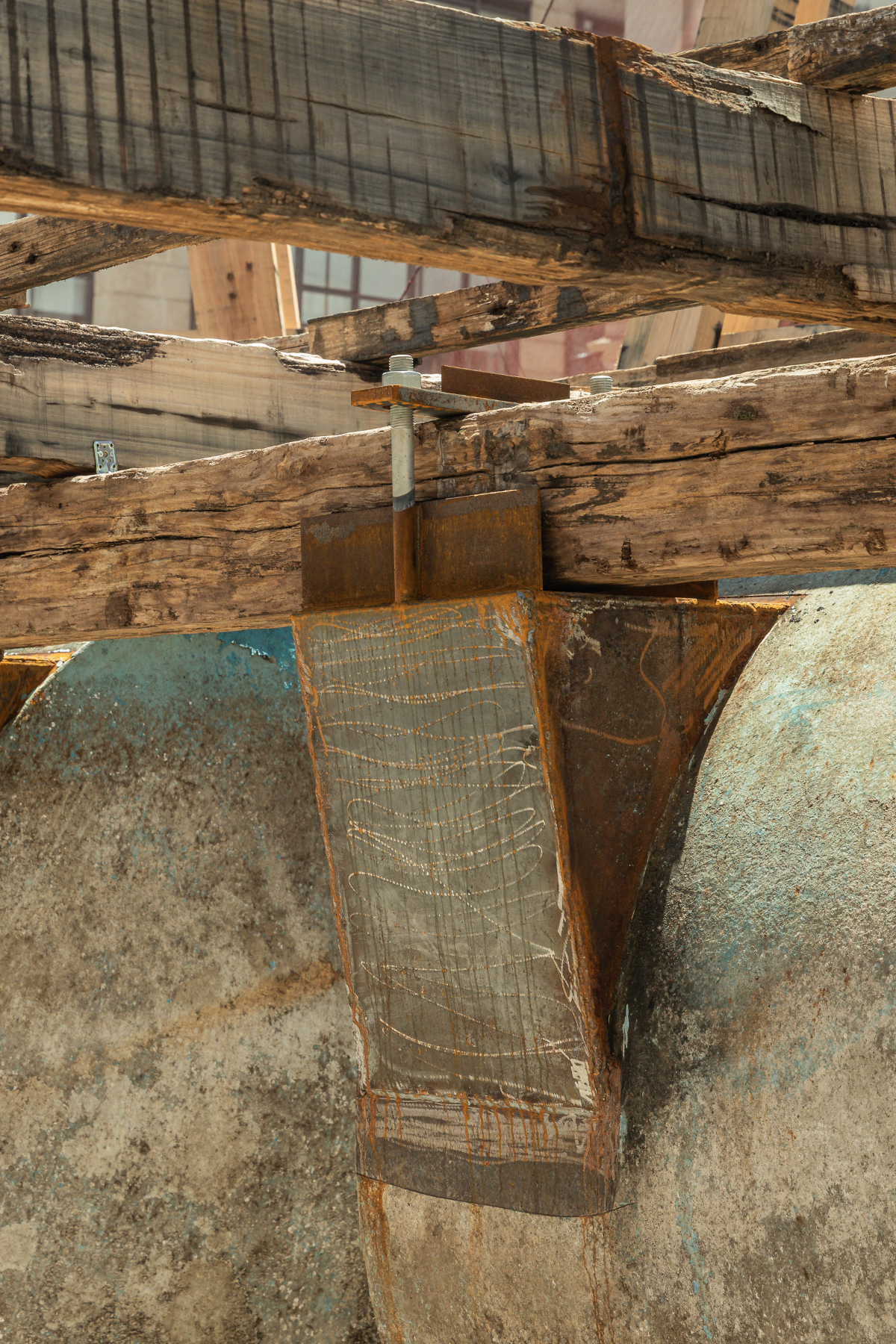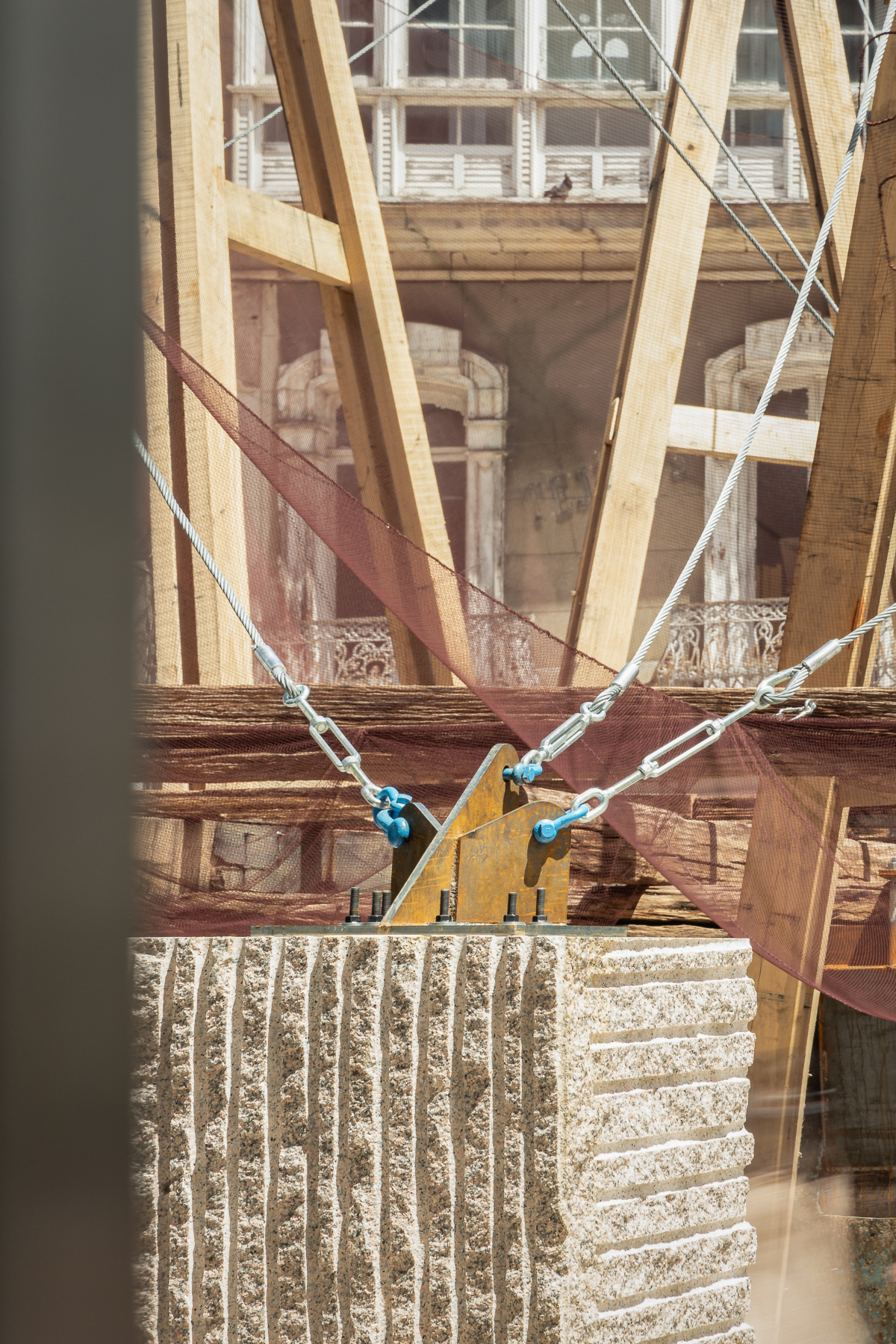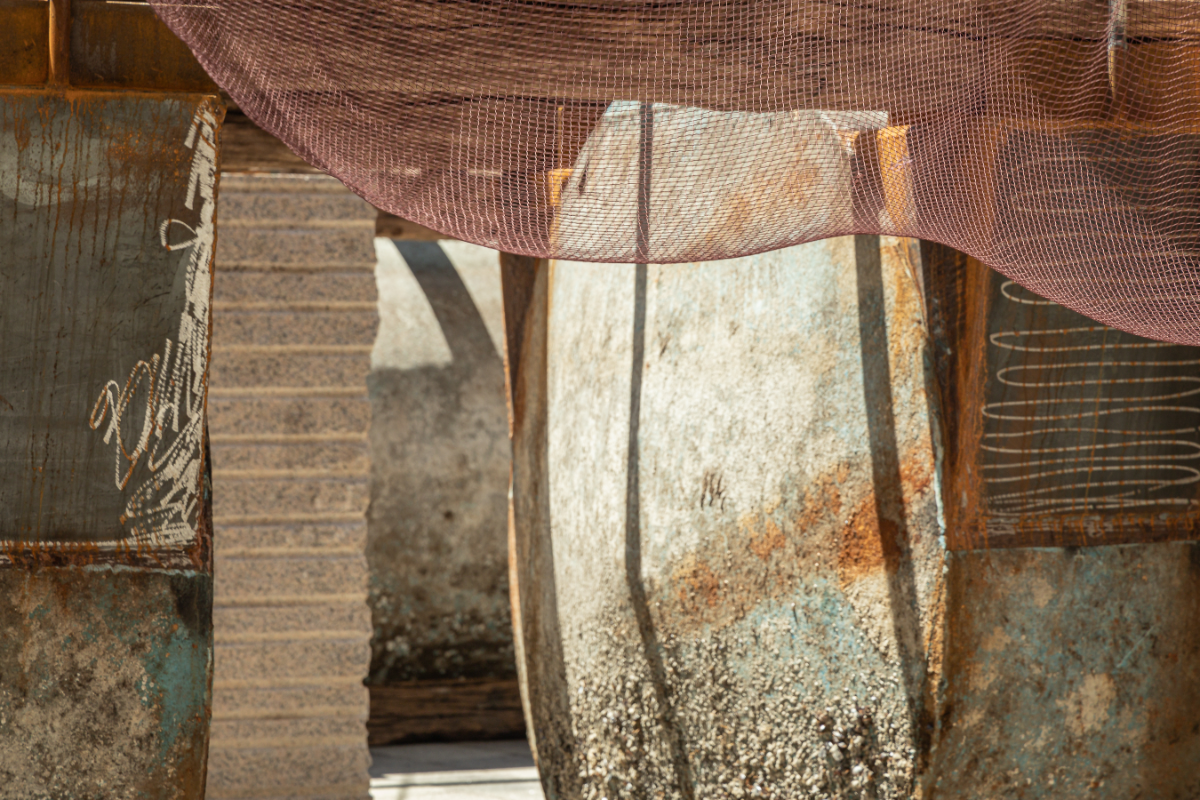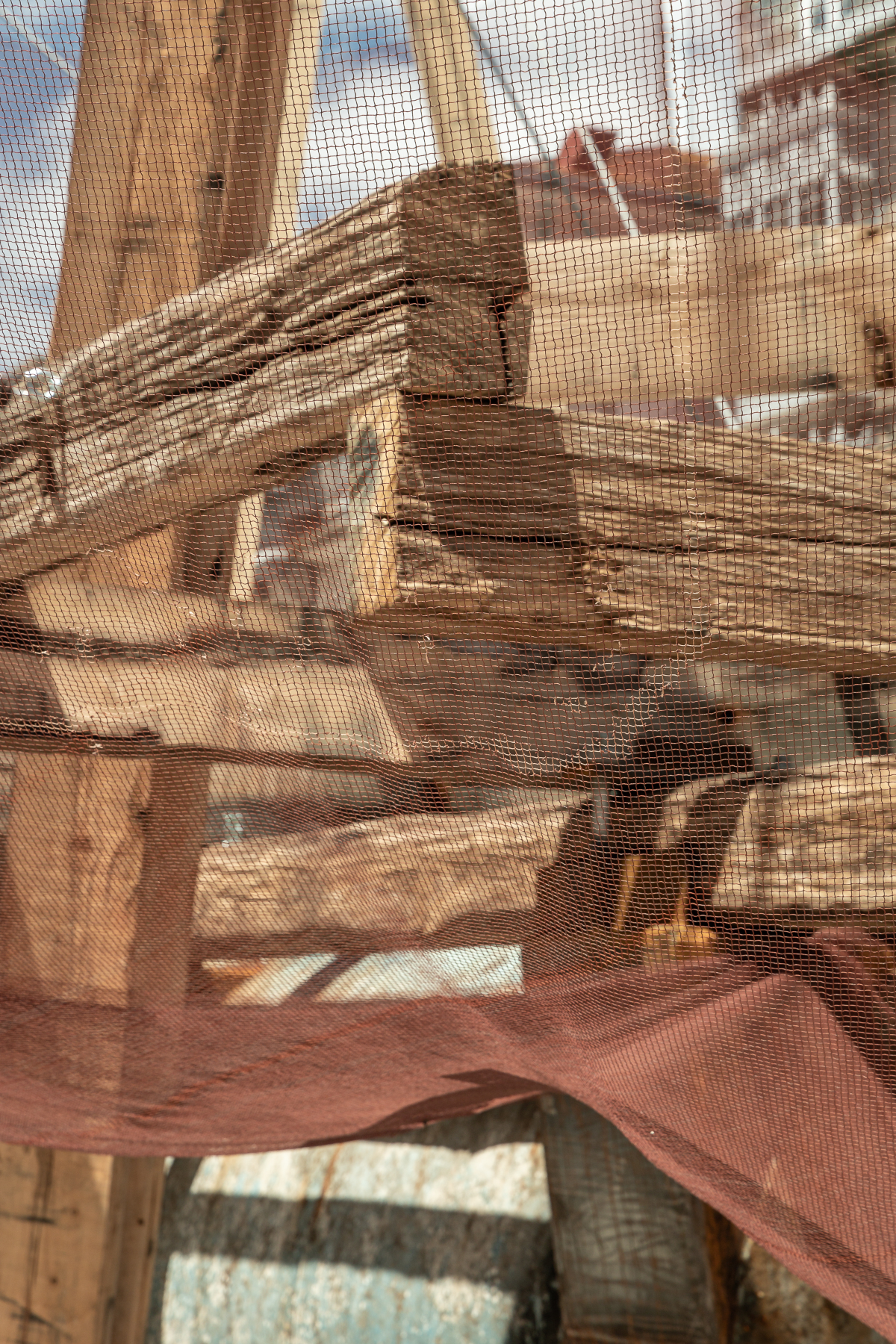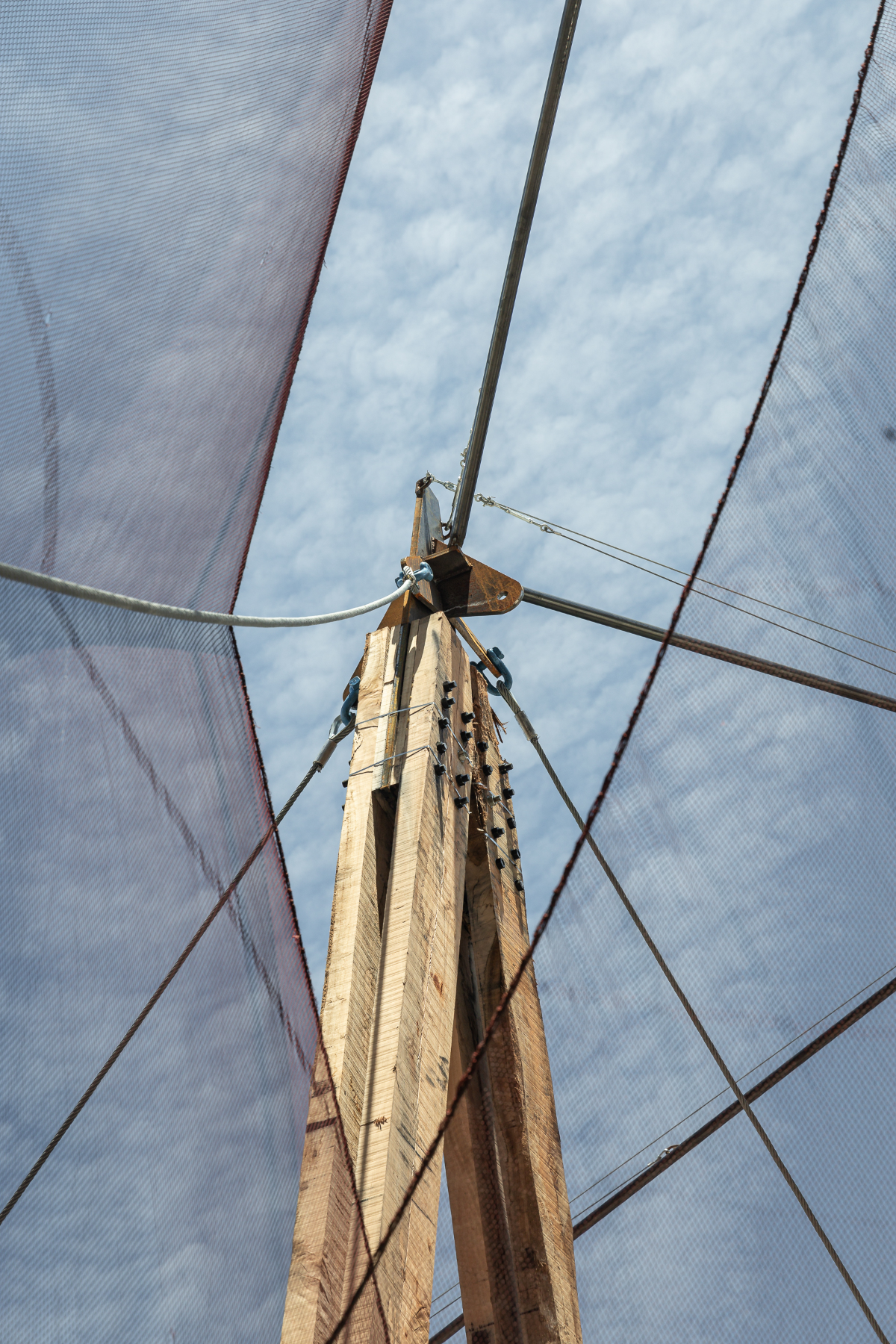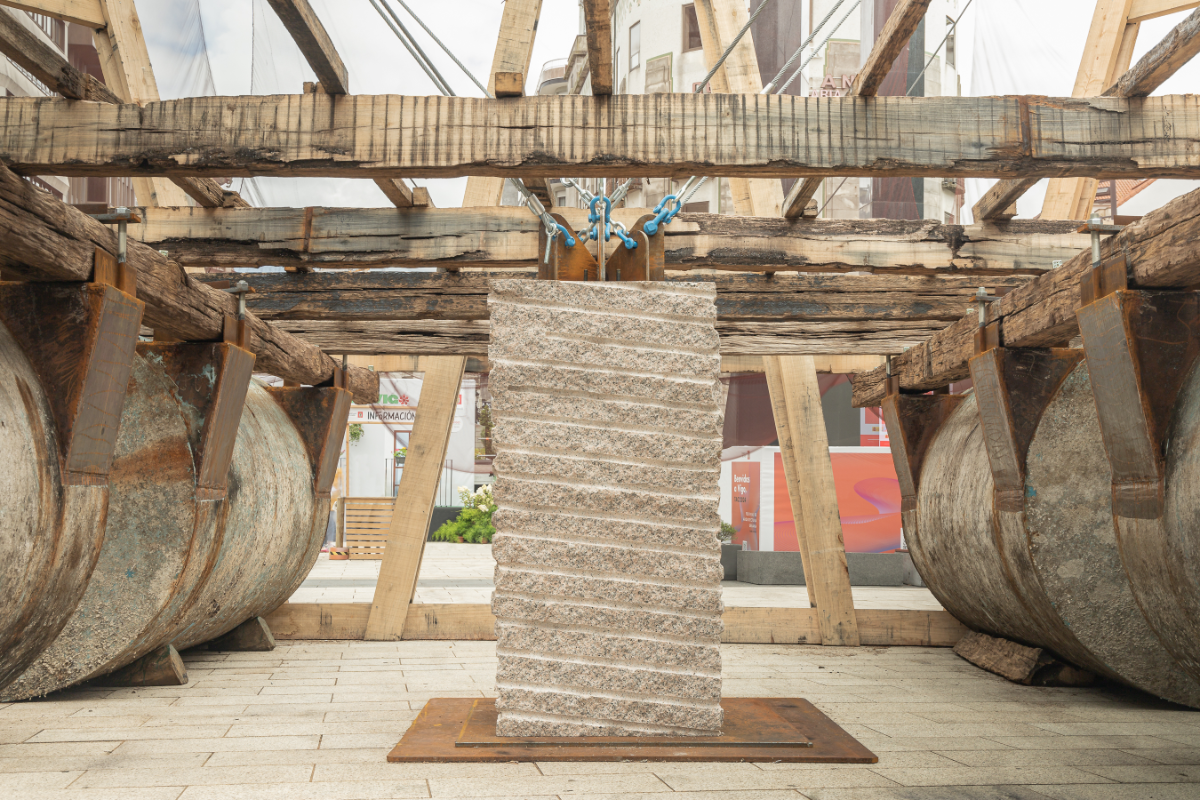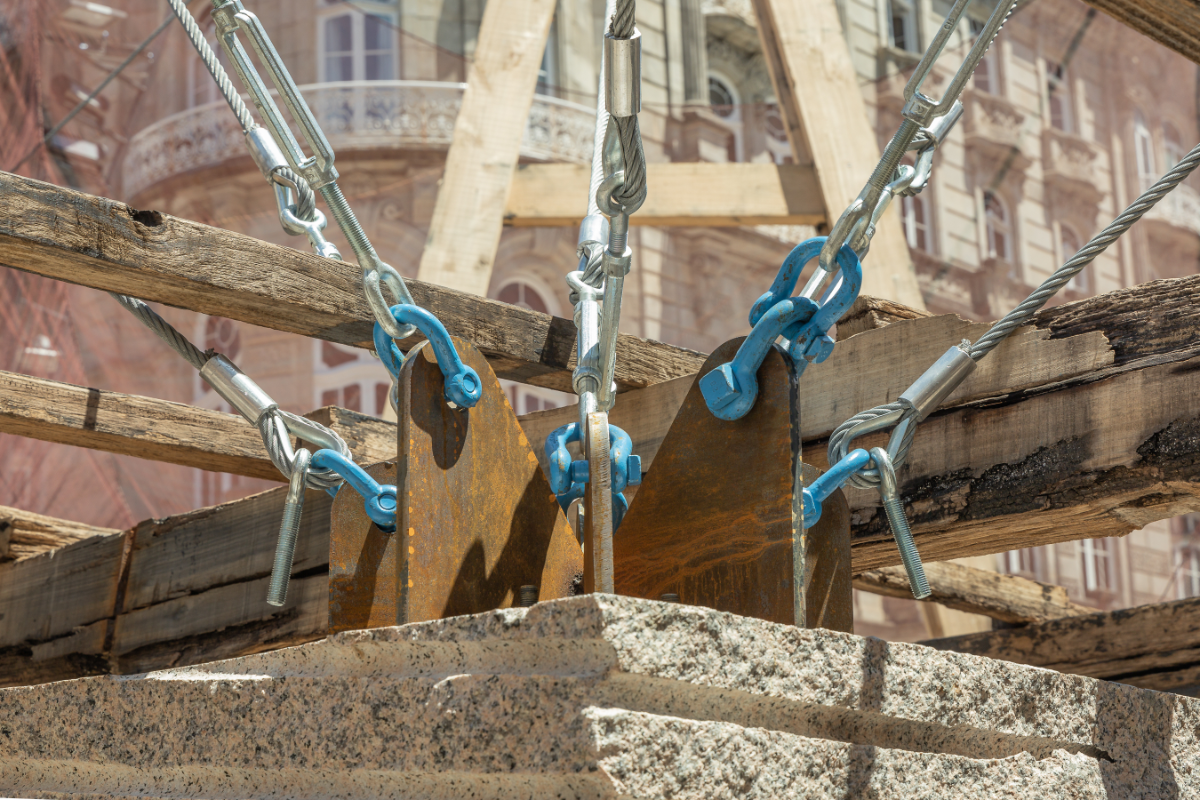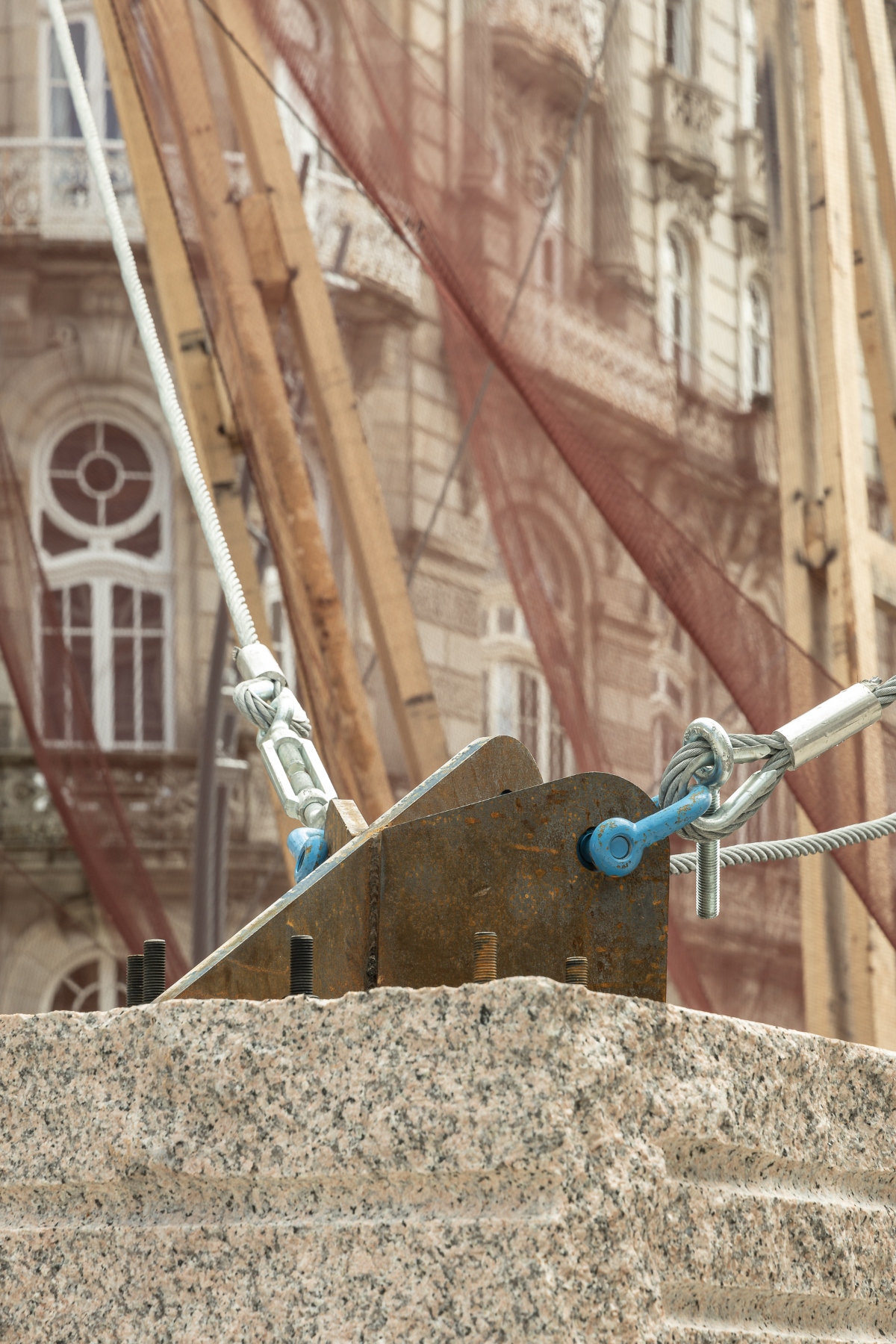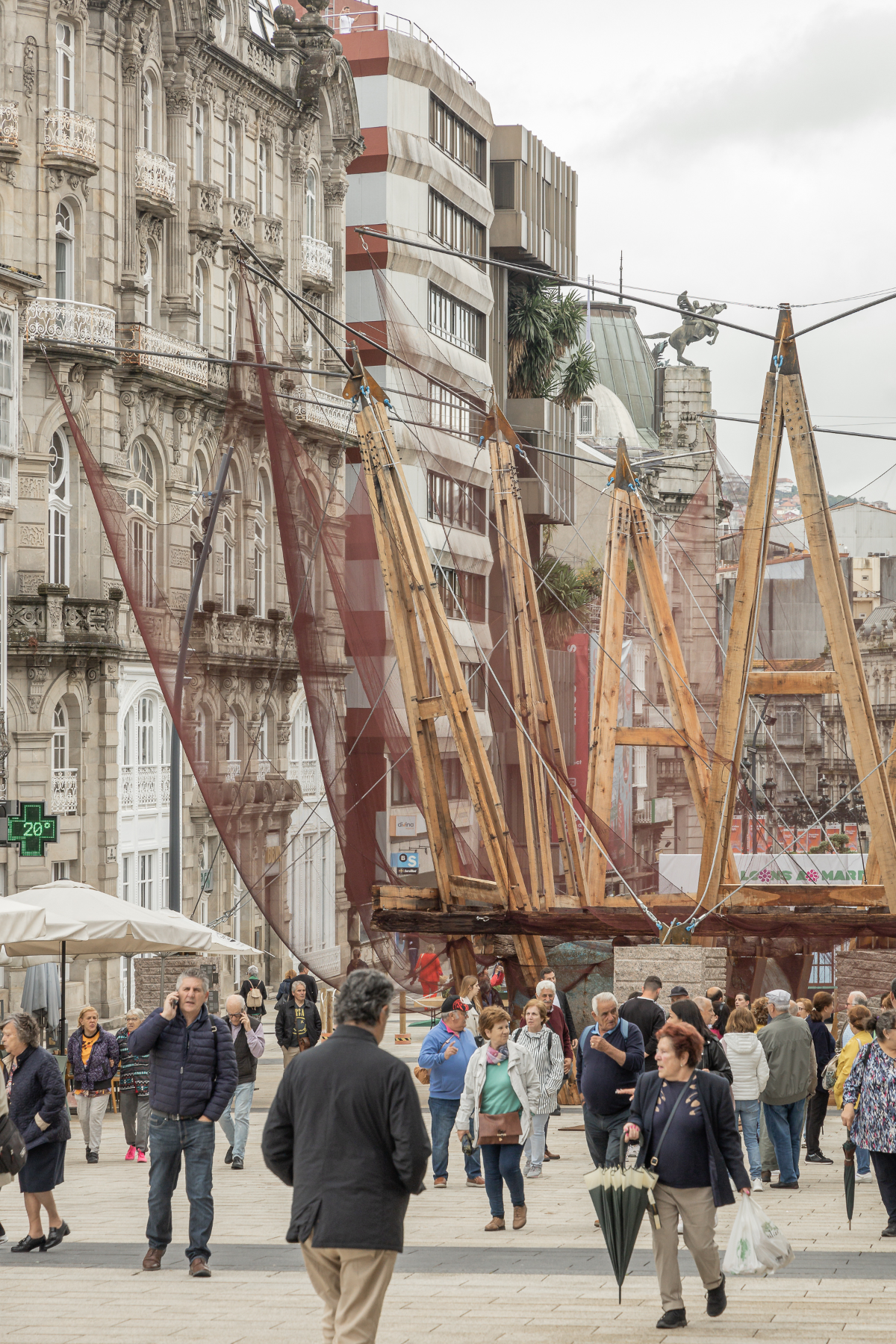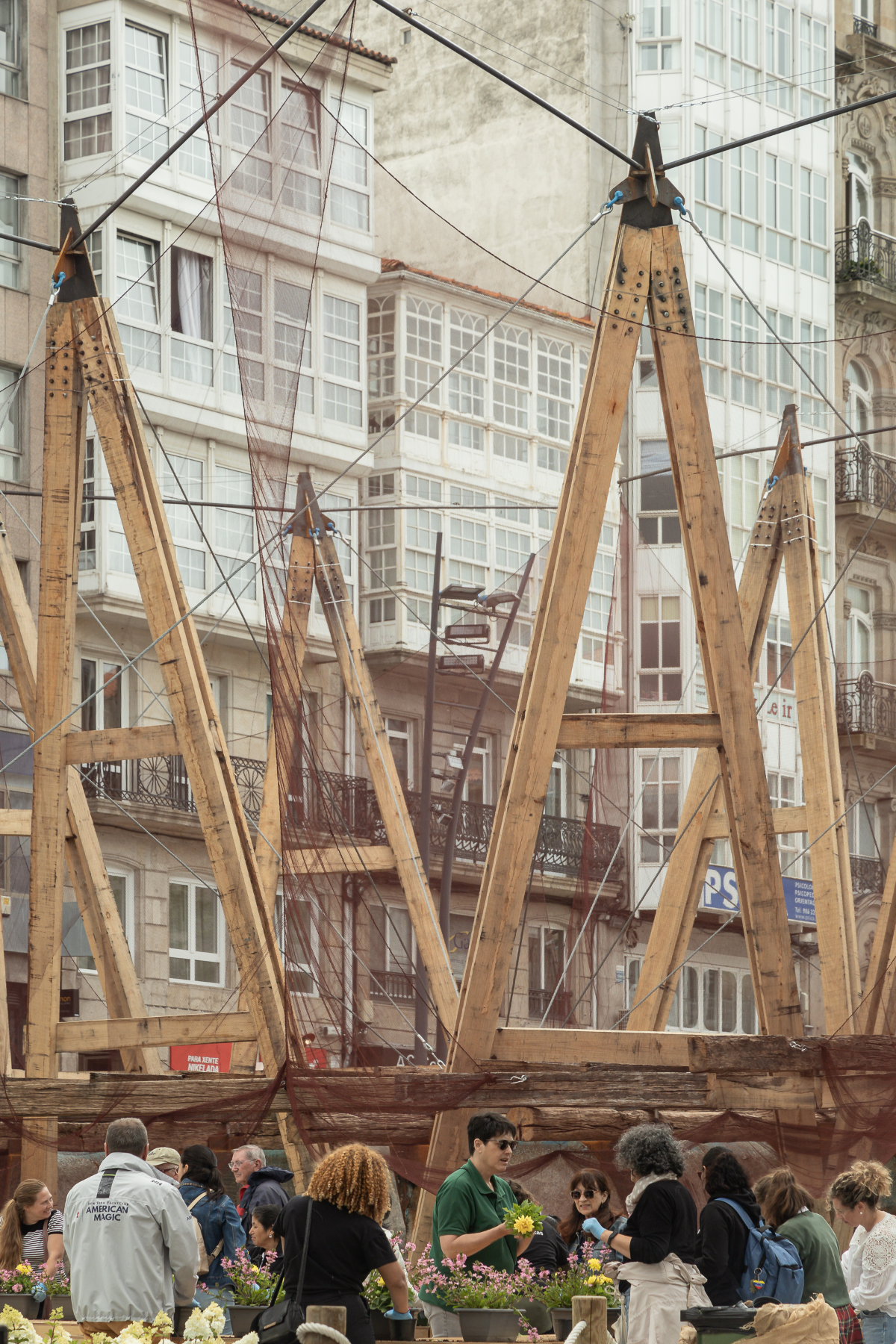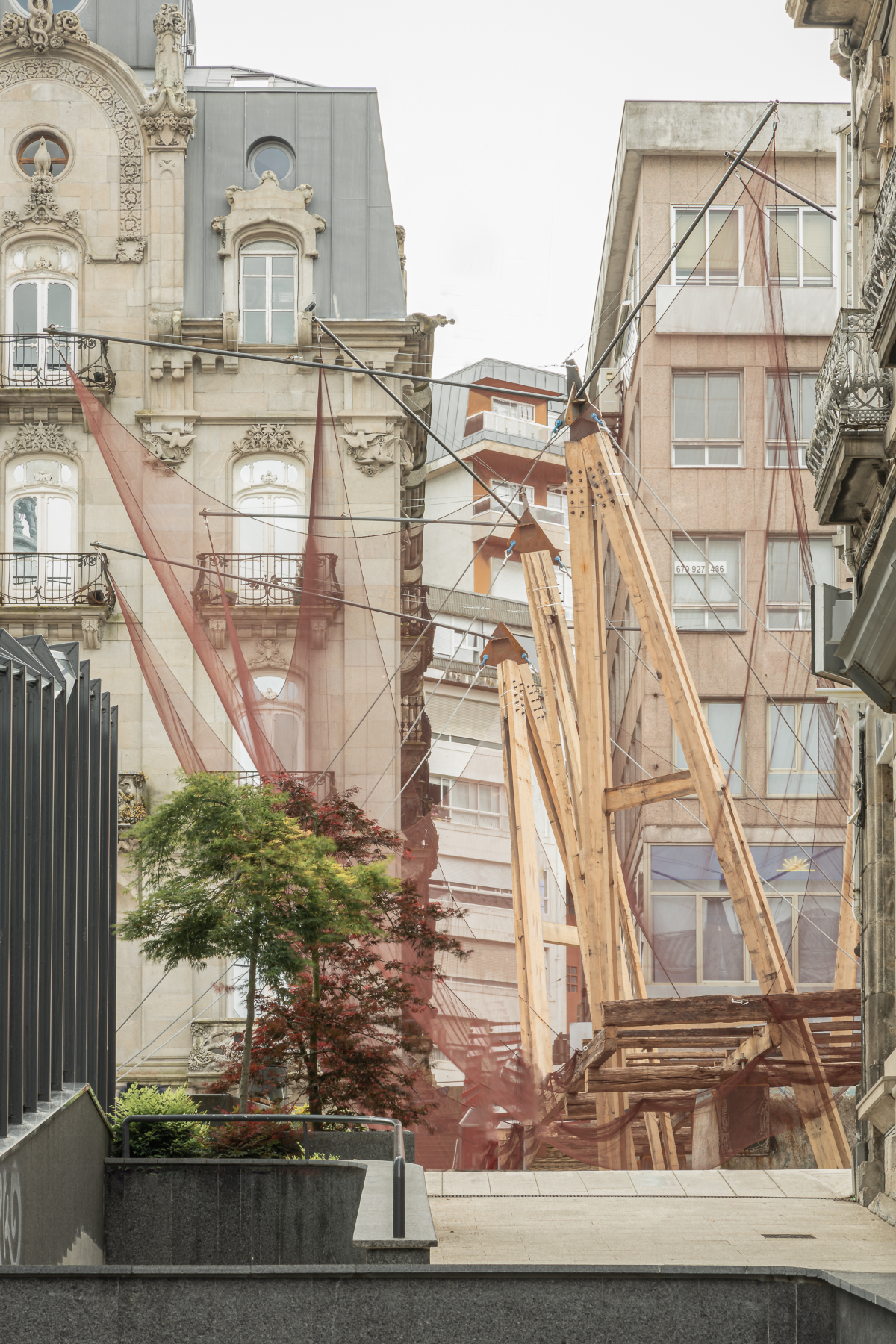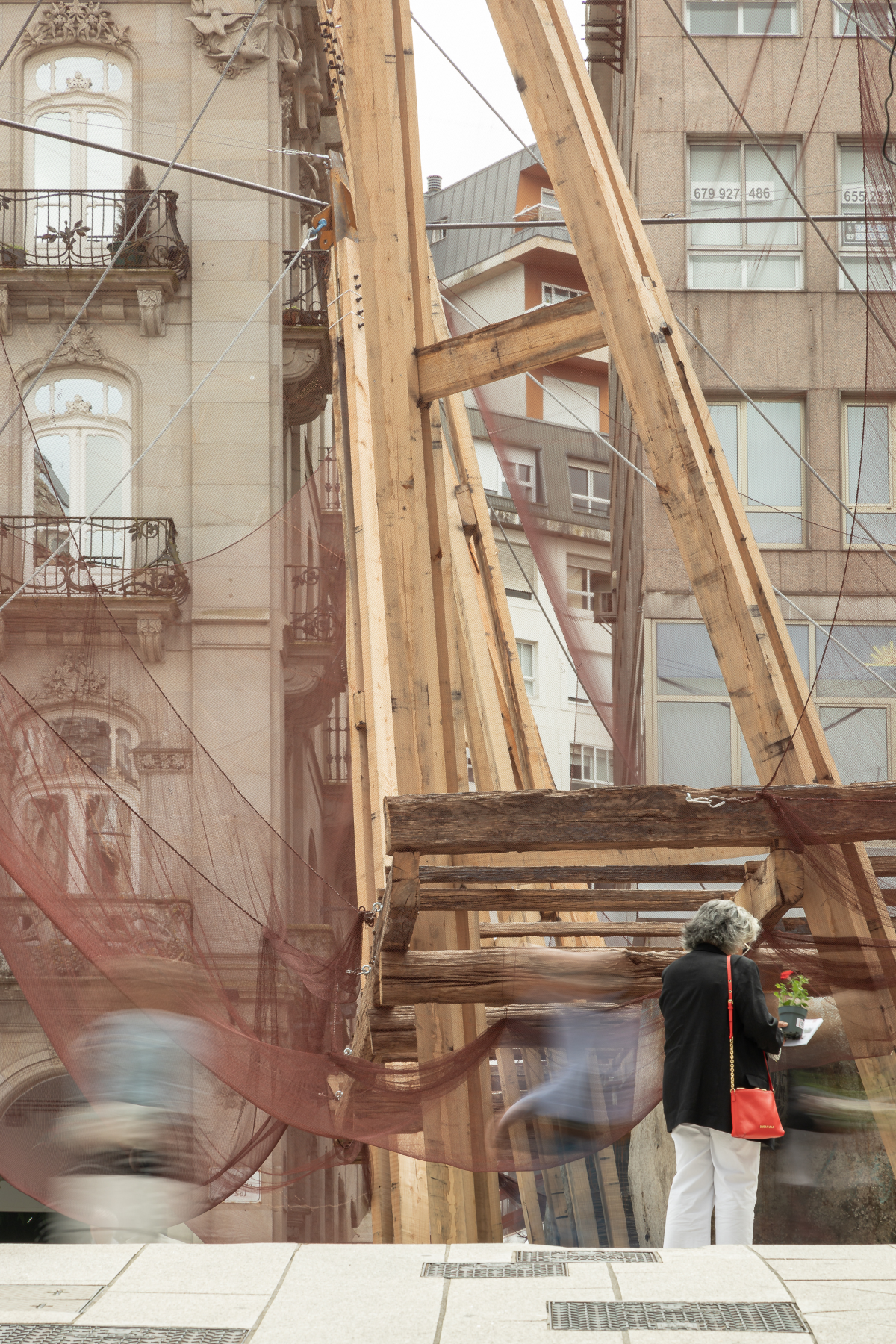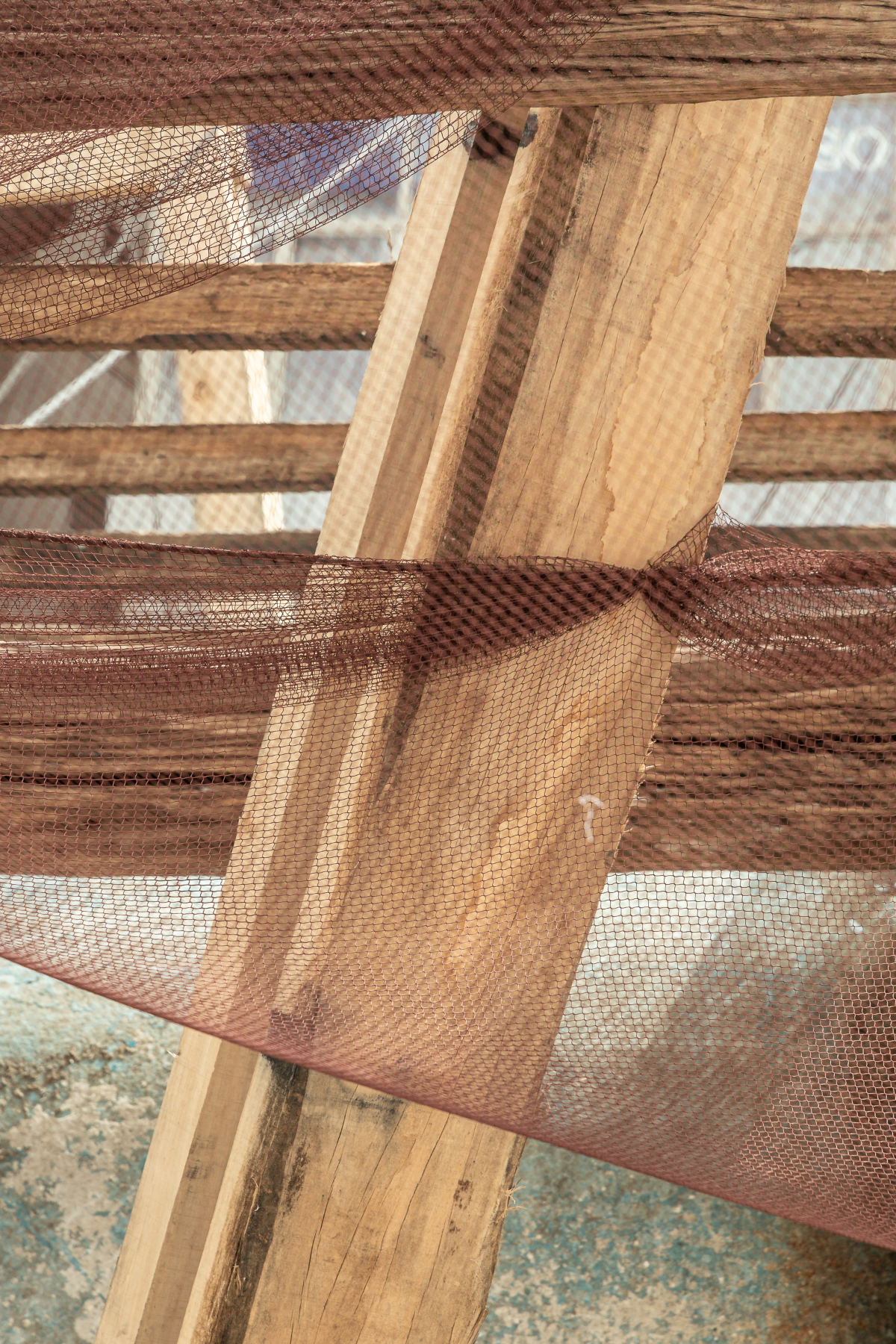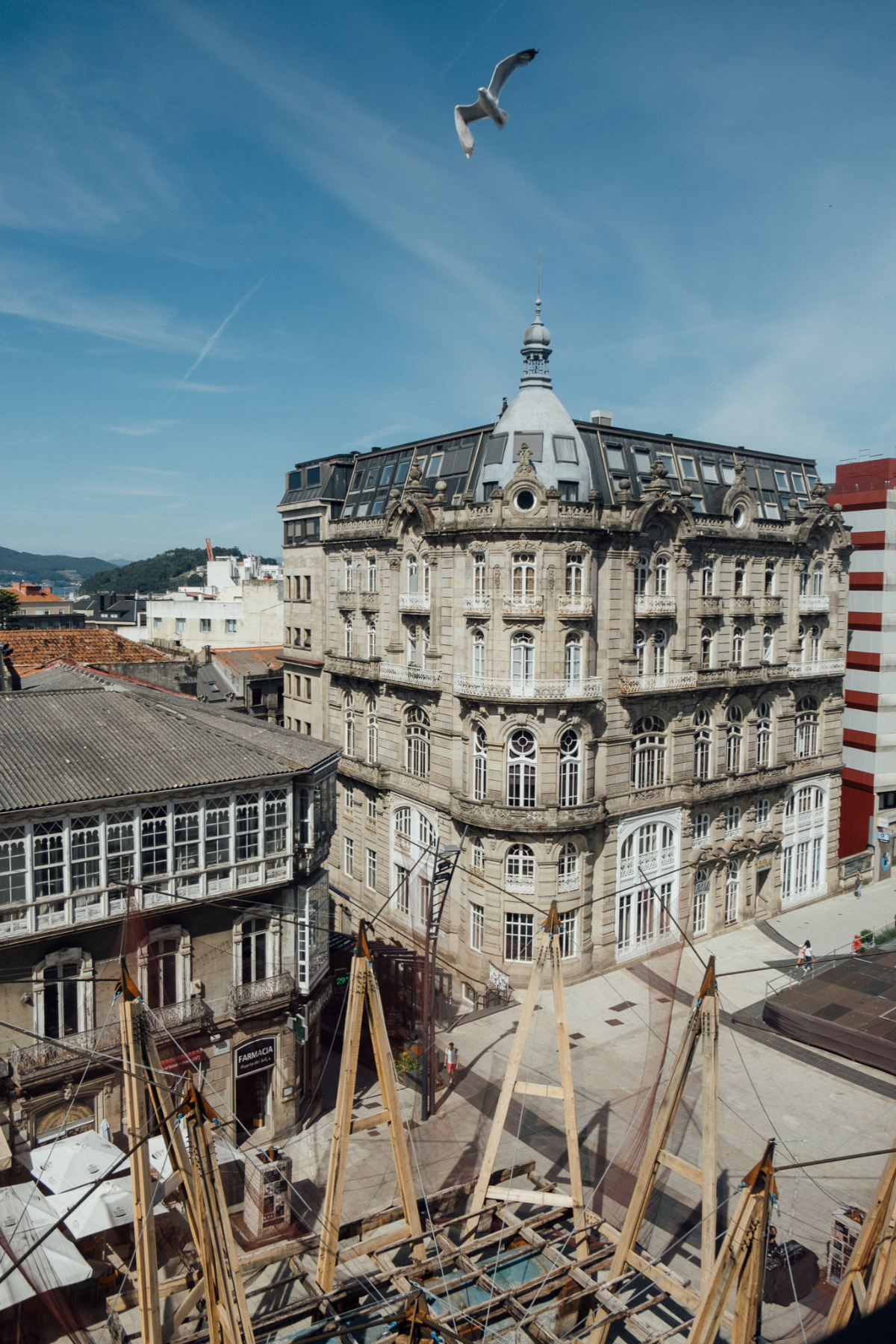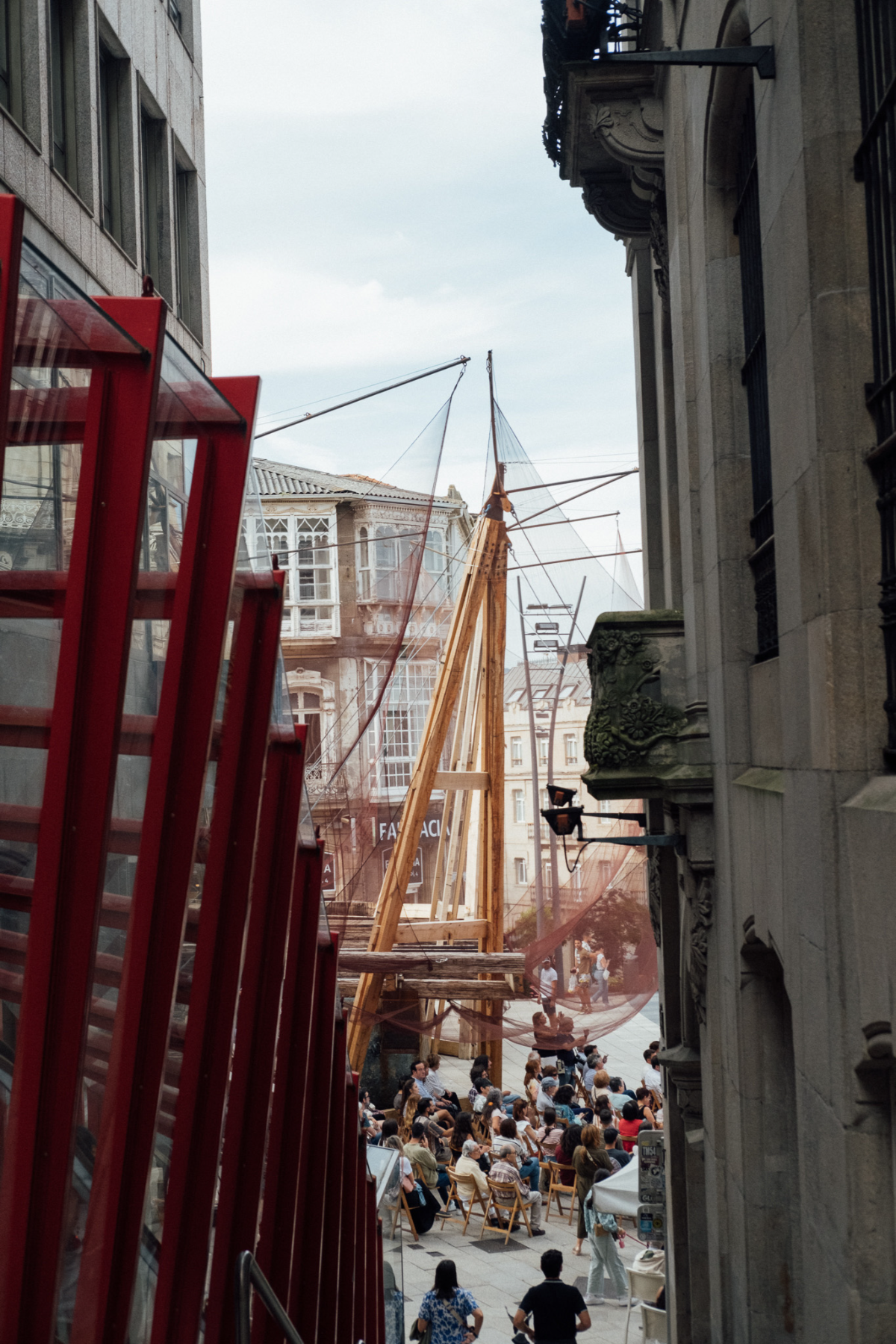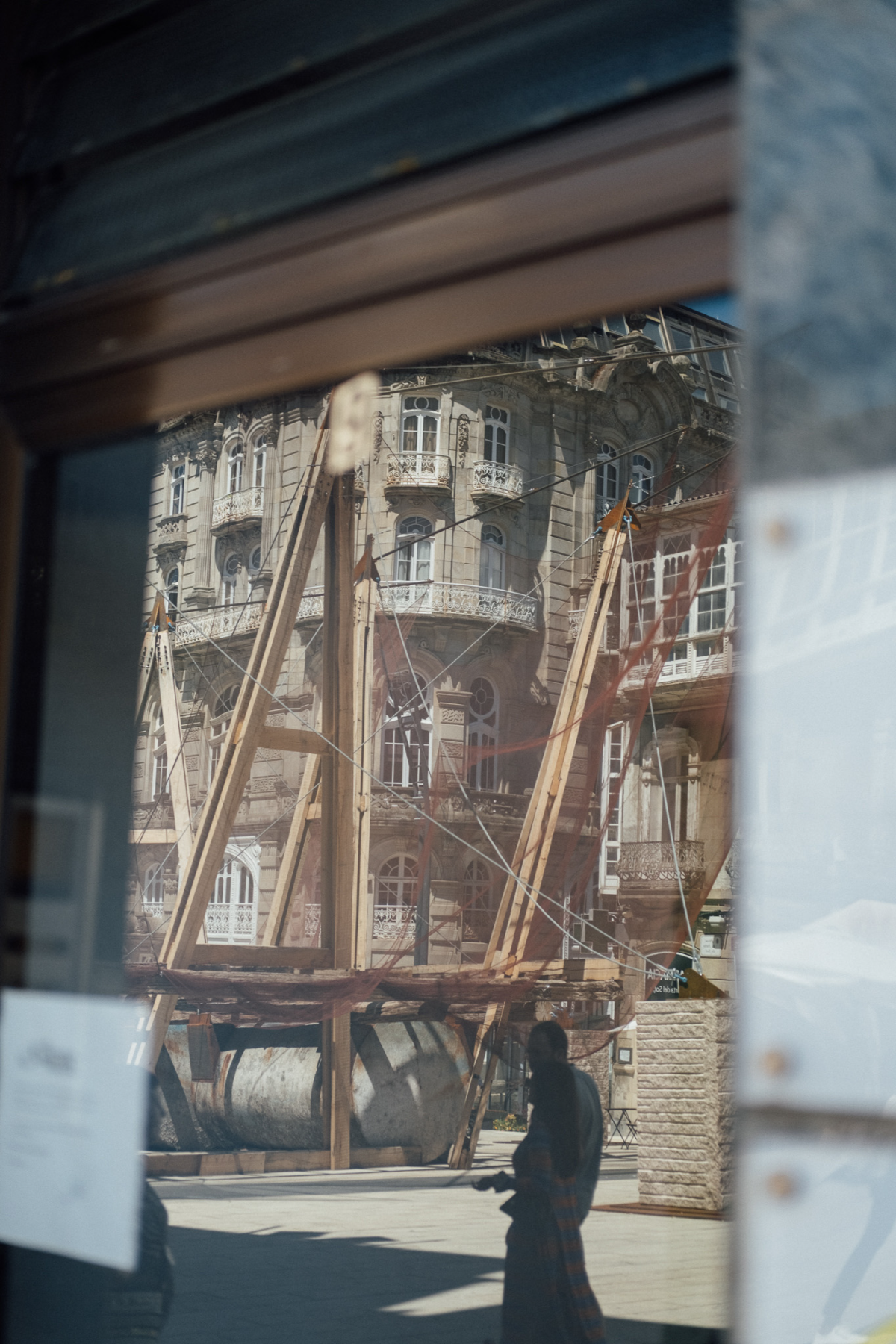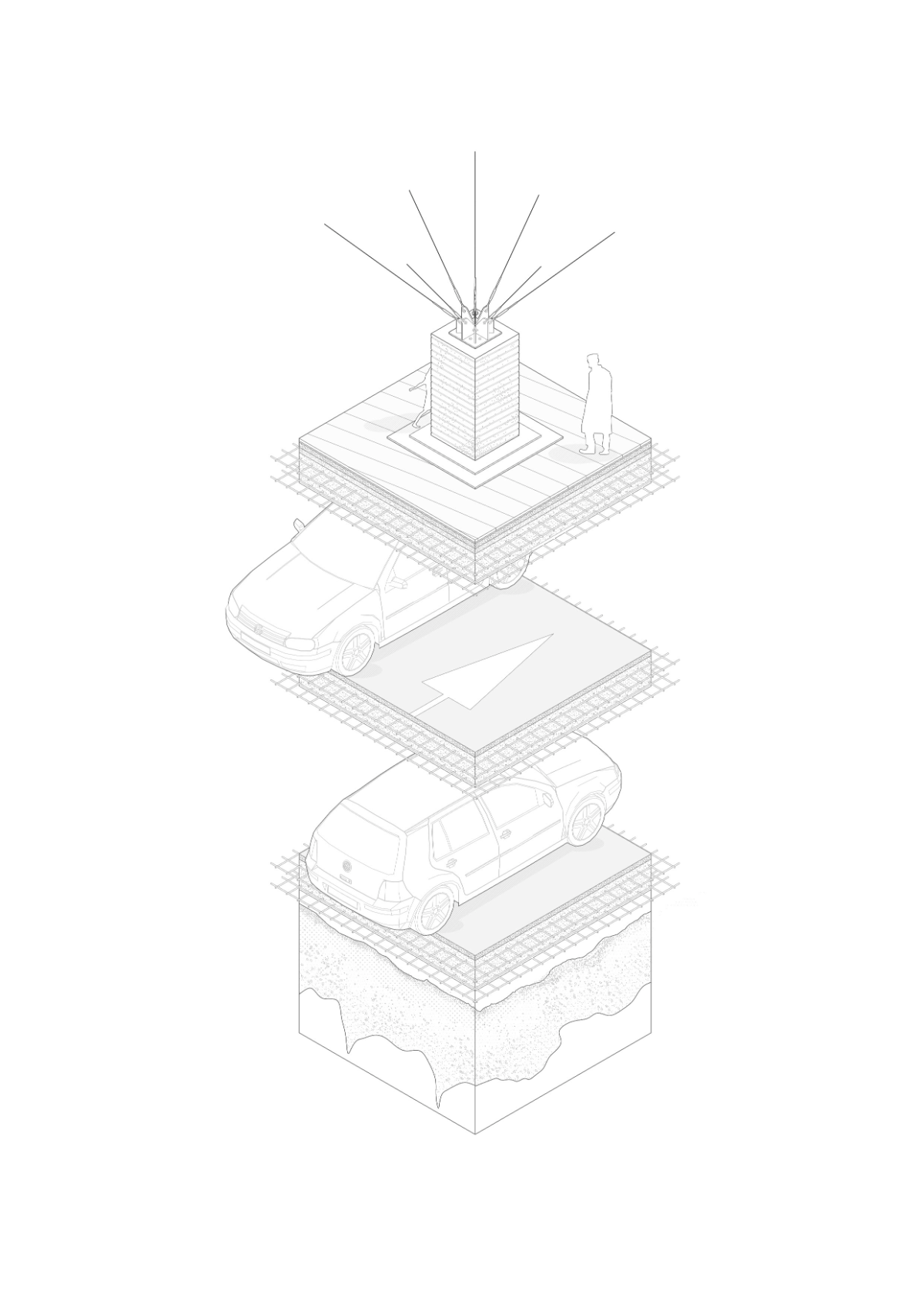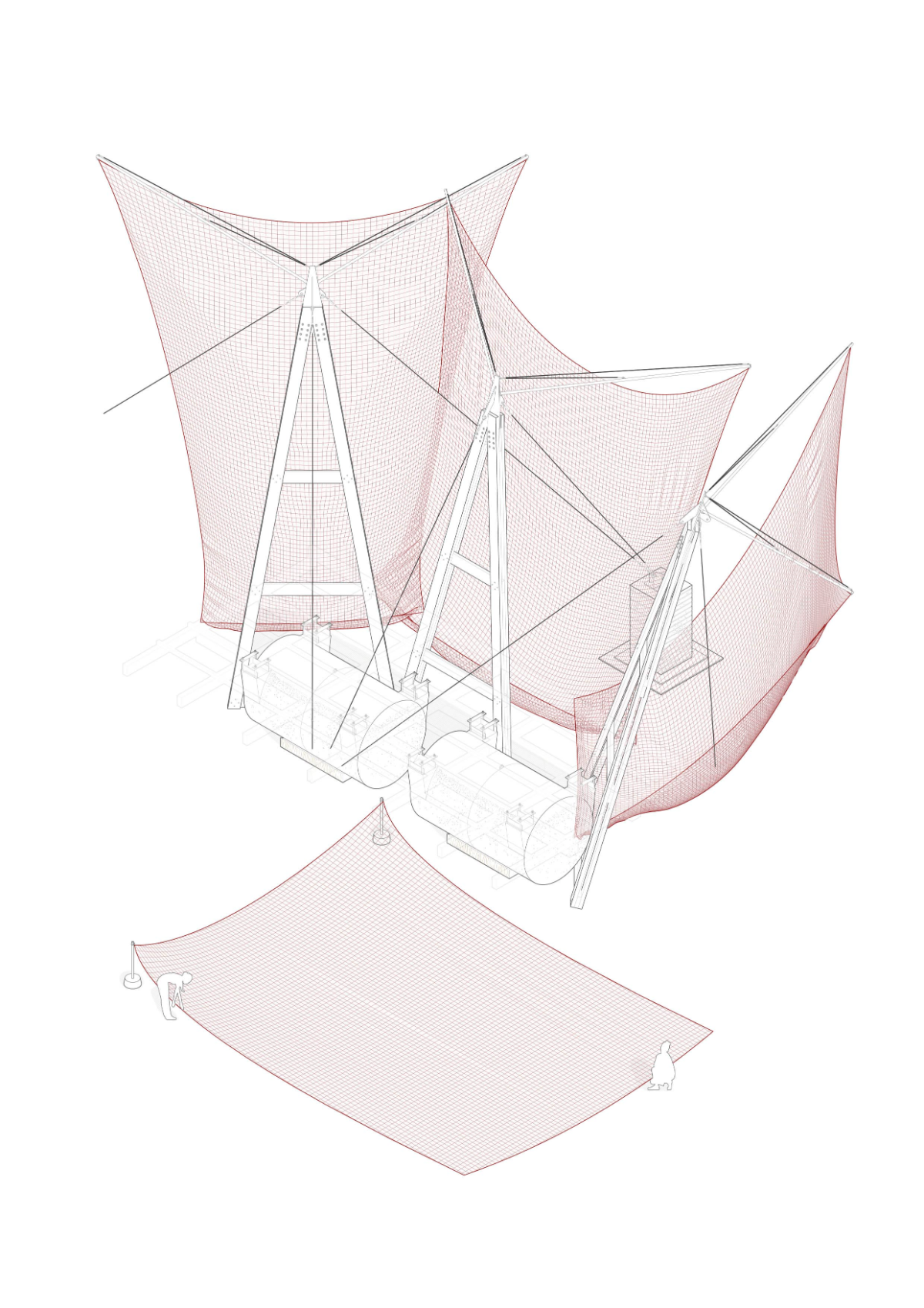The sea. It would be incredible to have the sea as a unit of measurement.
“In Galicia, there is the Sea of the Inside and the Sea of the Outside.” The first translates to the peaceful calm of arriving home, the second, limitless in extension and dangerous in nature, but of great beauty, is the place from which everyone desires to return.
The project links both “seas” on solid ground through a pavilion built with two recognizable elements inserted as urban pieces: the Galician mussel pla orm as the main structure, and the tradiconal fishing system on its roof as a lure and shelter for activities under the structure.
To address how architecture will be the tool for social transformacion in public spaces, the proposal recreates the transformacion of the territory through the interaccion between nature and artifice via a recognizable element: the mussel platform. A seleccion of an extractive typological specimen and its landscape, understood through the identity character of places and the harmonious adaptation of both aspects.
¡Qué Faena(r)! approaches architecture and artifice, tradition and mediation in parallel. On one hand, the vernacular derived from tradition applied to a territory once believed to be consolidated; on the other hand, and as the main challenge, the establishment of a proximity network between architects, resources, artisans, and local suppliers.
The pavilion’s purpose is to build a vision of contemporary society based on the interaction between nature and artifice, implanted in a territory modified by resource extraction.
Understanding the peninsula’s territory not just from the natural element but from the architectures that have participated in its transformation and how they have altered social life in “o Mar de dentro.”
Tradition and Innovation
The pavilion design seeks the involvement of local ar sans through the reuse of materials that have reached the end of their useful life, considered as waste. The collaboration between architects and artisans promotes a circular and local economy. The artisans contribute their knowledge of materials and traditional techniques, facilitating resource reuse and reducing the ecological footprint. This synergy strengthens cultural identity and fosters economic and sustainable development in the region, establishing a connection between zero‐kilometer architecture, the circular economy, and the recycling of materials to minimize environmental impact and encourage more conscious and sustainable practices in construction and design.
Stable prognosis within severity: end of its useful life
The commitment to local artisans highlights not only the importance of working with raw materials from zero kilometers that reduce transportation times and energy consumption but also the recyclability of these materials.
Materials: 82.57% of the pavilion has been constructed using materials at the end of their useful life. Fishing nets, rusty drums, recovered mussel platform wood, and granite blocks are given a “second chance” after fulfilling their mission at sea.
Energy: By promoting the use of “green” eucalyptus wood, its continuous extraction is encouraged, contributing to the reduction of its dominance in Galician forests. This approach not only allows for quick material availability but also reduces energy costs associated with artificial wood drying. A clear balance between extraction and immediate reuse, achieving sustainable circular forest management.
Craftsmanship: Collaboration with stonemasons, traditional carpenters, and the redeira association has allowed the use of recovered, zero‐kilometer materials and a reinterpretation of traditional knowledge to create a large‐scale urban artifact that combines tradition and innovation.
Waste: The pavilion’s design involves local artisans through the reuse of materials that have completed their useful life, considered as waste. Once the pavilion has served its purpose, the materials are returned to the industrial circuit to be reused again.
Emissions: The Xunta de Galicia, through the Fortra wood traceability platform, has certified the removal of 17,797.85 kg of CO2 due to the use of reused and zero‐kilometer woods, equivalent to what 187 cars produce over 500 km.
Vast Territory
The realization of the Pavilion has been made possible thanks to local labor, promoting the circular and local economy in the region. Artisans and architects have collaborated from the workshop in the production and assembly of all the elements.
During its useful life, the mussel platform wood faces extreme conditions. Strong waves, winds from the estuary, the sun, and marine biological life that adheres to its surface make this material, rooted in fishing tradition, resilient. After three decades of service, this hostile environment contributes to the formation of a special patina and a unique texture, marked by the constant ebb and flow of waves and the passage of time, giving the wood incomparable character and beauty. Salt and water impregnate the wood, increasing its density and strength, while the marks of time tell the biological story of its life at sea.
Each year, 100 million tons of plastic waste are released into nature, and a tenth ends up in the oceans. “Ghost nets” account for 10% of total waste and dumping into the sea. These nets destroy coral, devastate habitats of sessile animals, damage marine vegetation, accumulate sediments, and block access to niche habitats for certain species.
The nets, like the mussel platforms, are elements that form part of fishing as a productive activity, but also cultural and anthropological, as their sewing and repair have traditionally been done by women. The gender bias in this activity has also generated a community and solidarity specific to the women of the sea.
Galicia is land of wind. This natural resource not only provides energy as an energy booster but the force of its nature is visible through the cyclical natural processes of erosion that, over millennia, have shaped this region.
Galicia is land of granite. From its vast quarries, in the heart of the extractive territory, the pink color stands out from the depths of Pontevedra due to the presence of potassium feldspars in its composition. Stones inside the mountain don’t improve; they only remain; outside, in the air, with rain, wind, and cold, they improve, they harden.
On the other hand, the use of freshly sawed “green” eucalyptus wood entails a reflection on the measures to be taken to recover a consolidated but degraded ecosystem by this invasive species, which aims to restore ecological balance and the biological con nuity of native forests.
Thus, ¡Qué Faena(r)! becomes a conceptual mediator between the urban, cultural, and tradional elements of the place.

